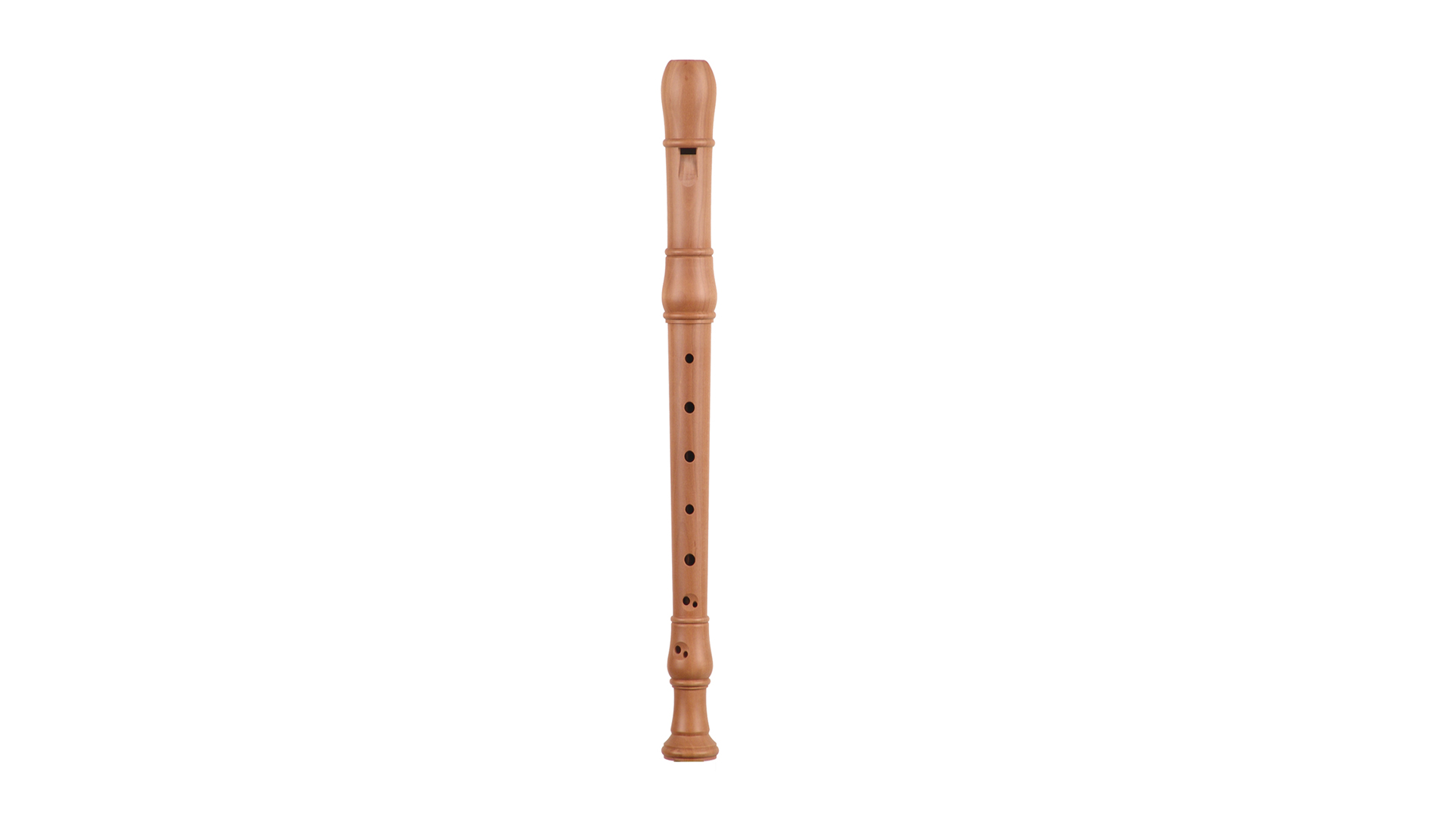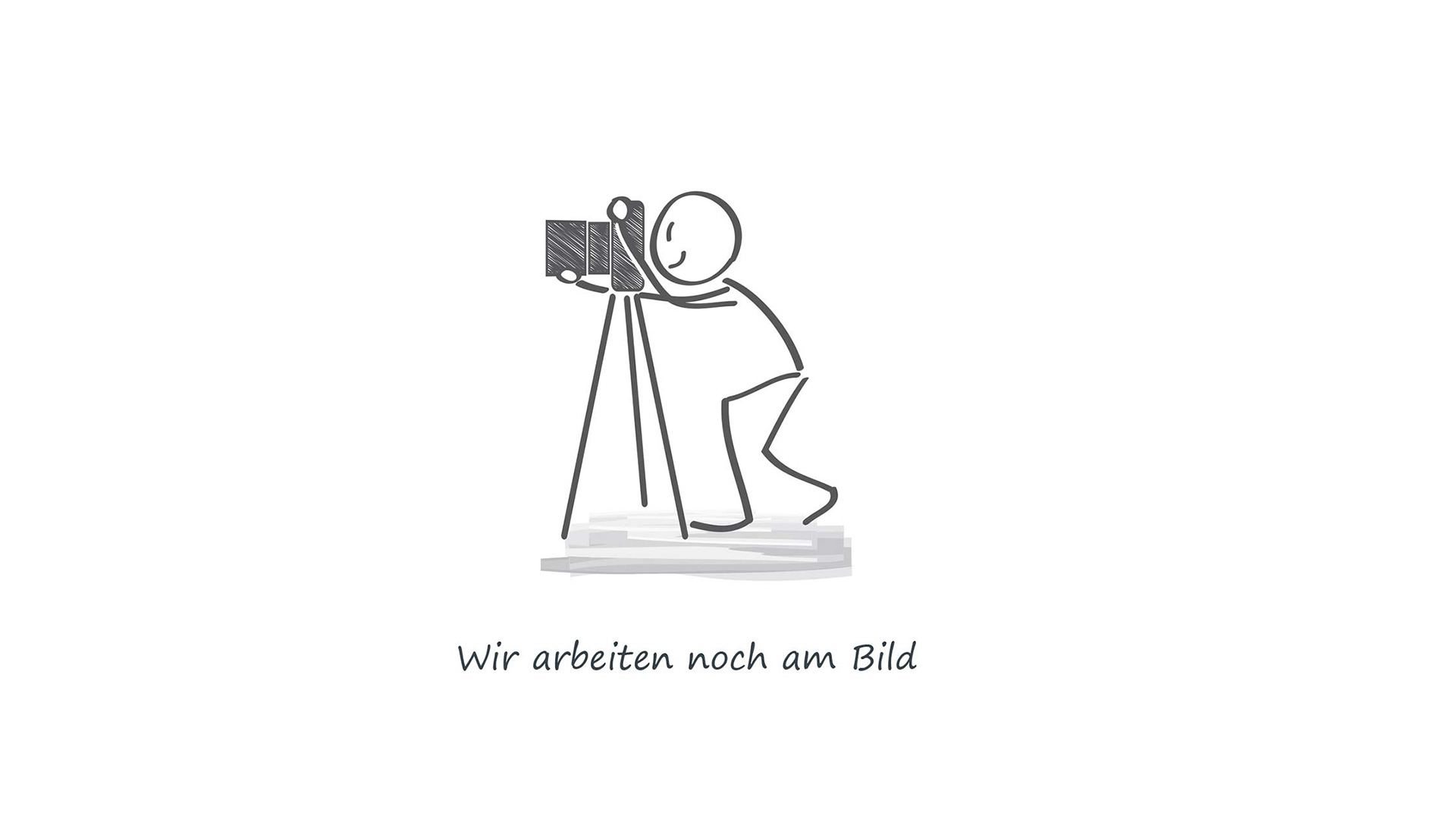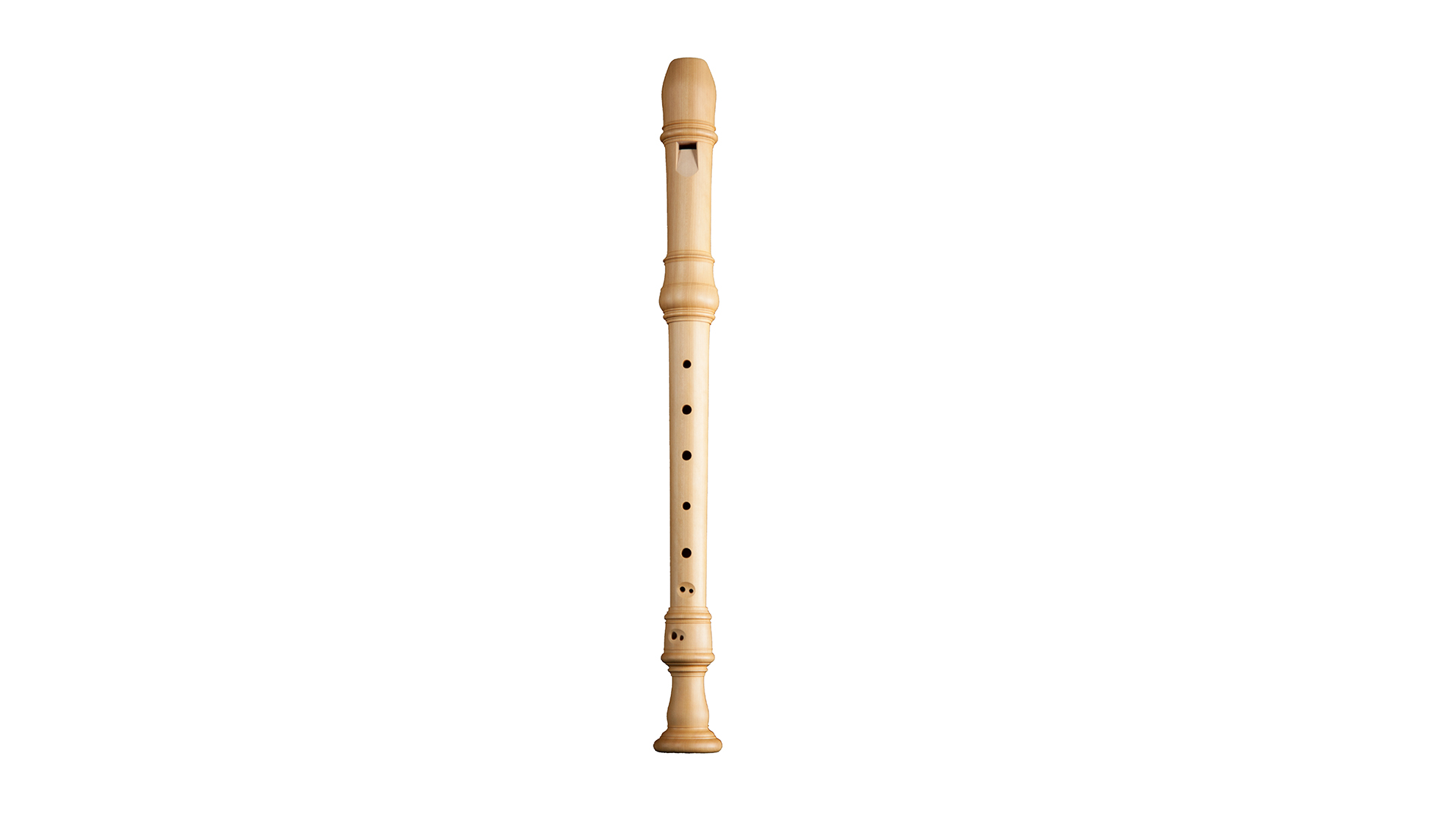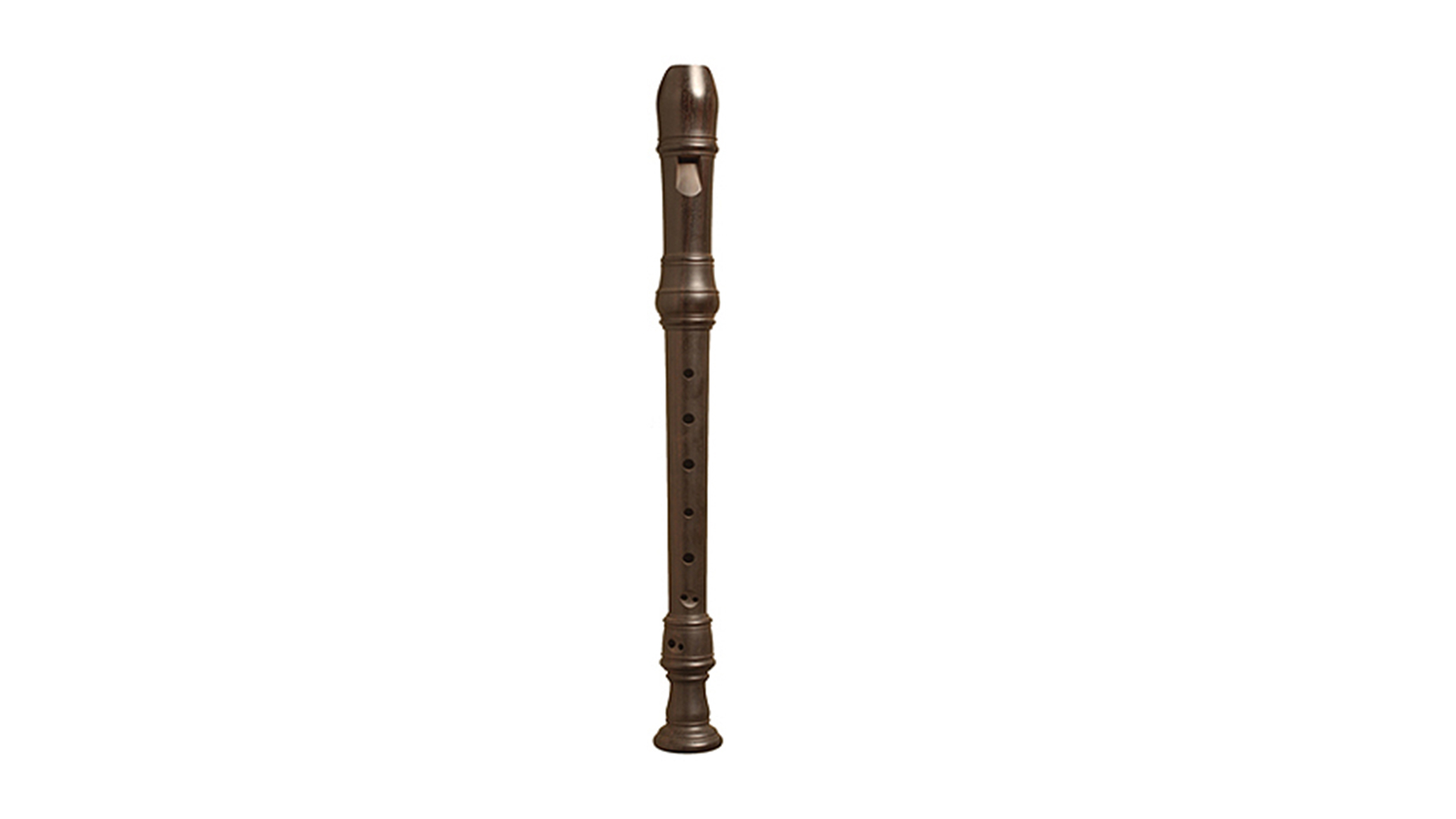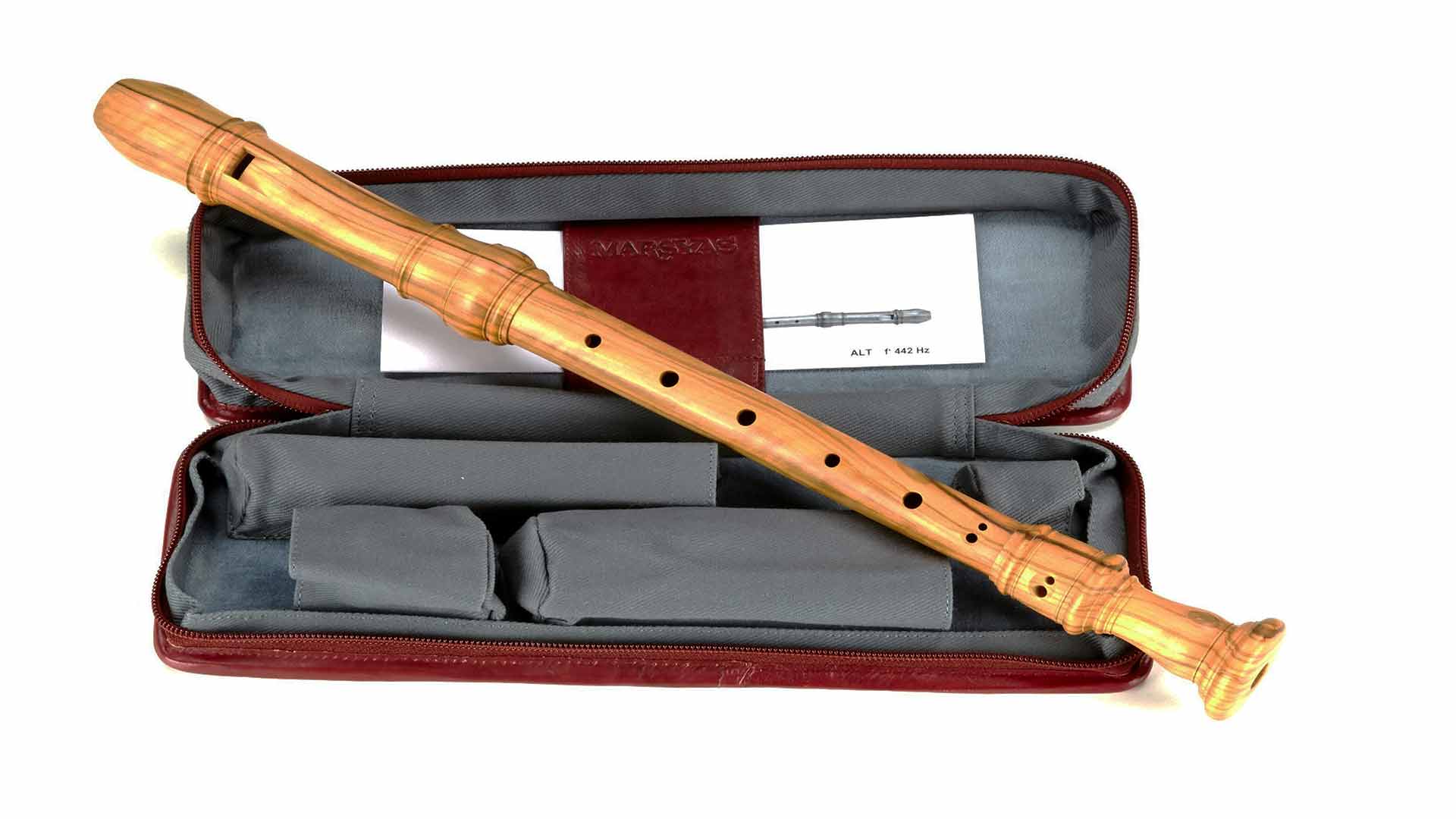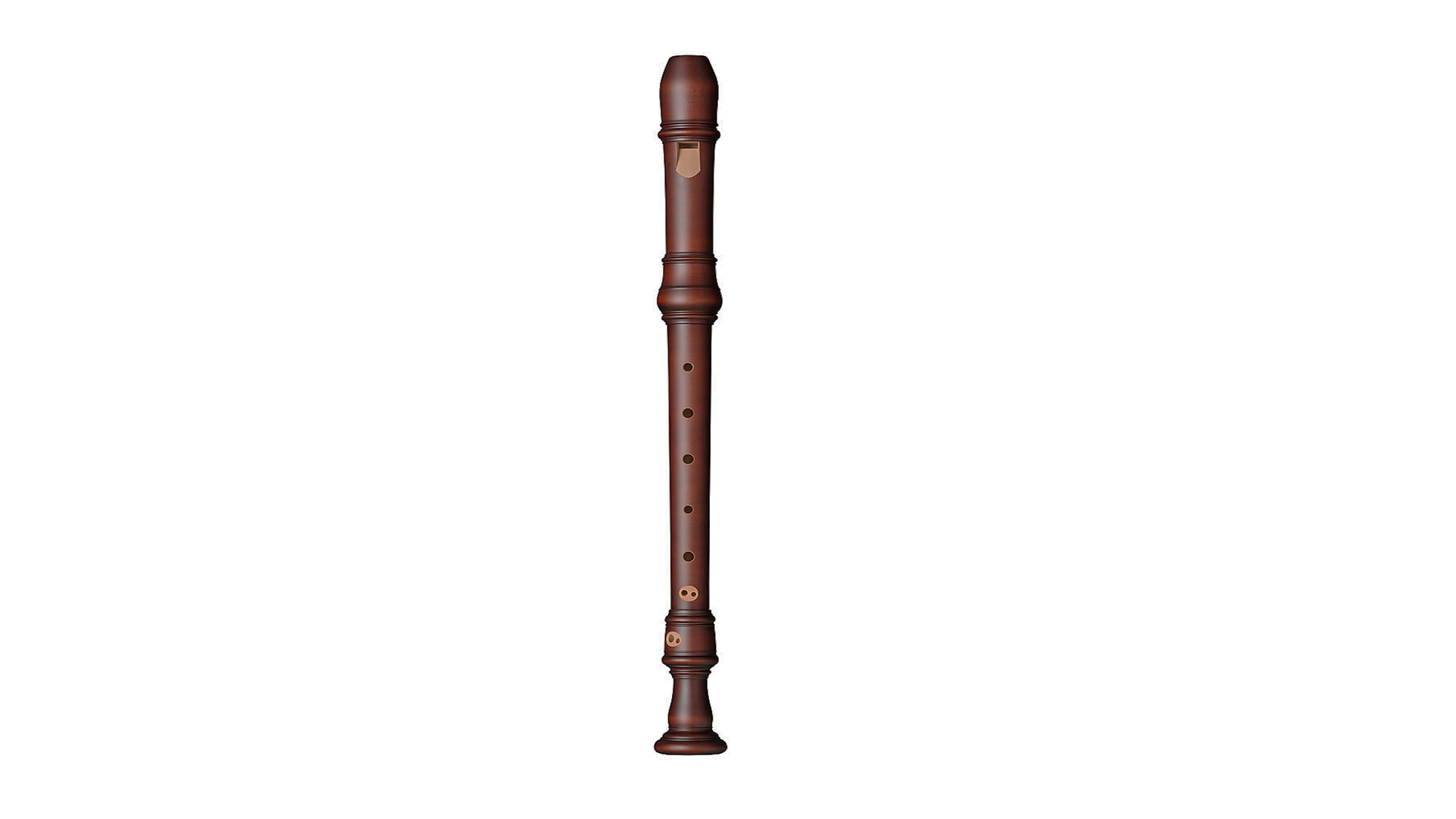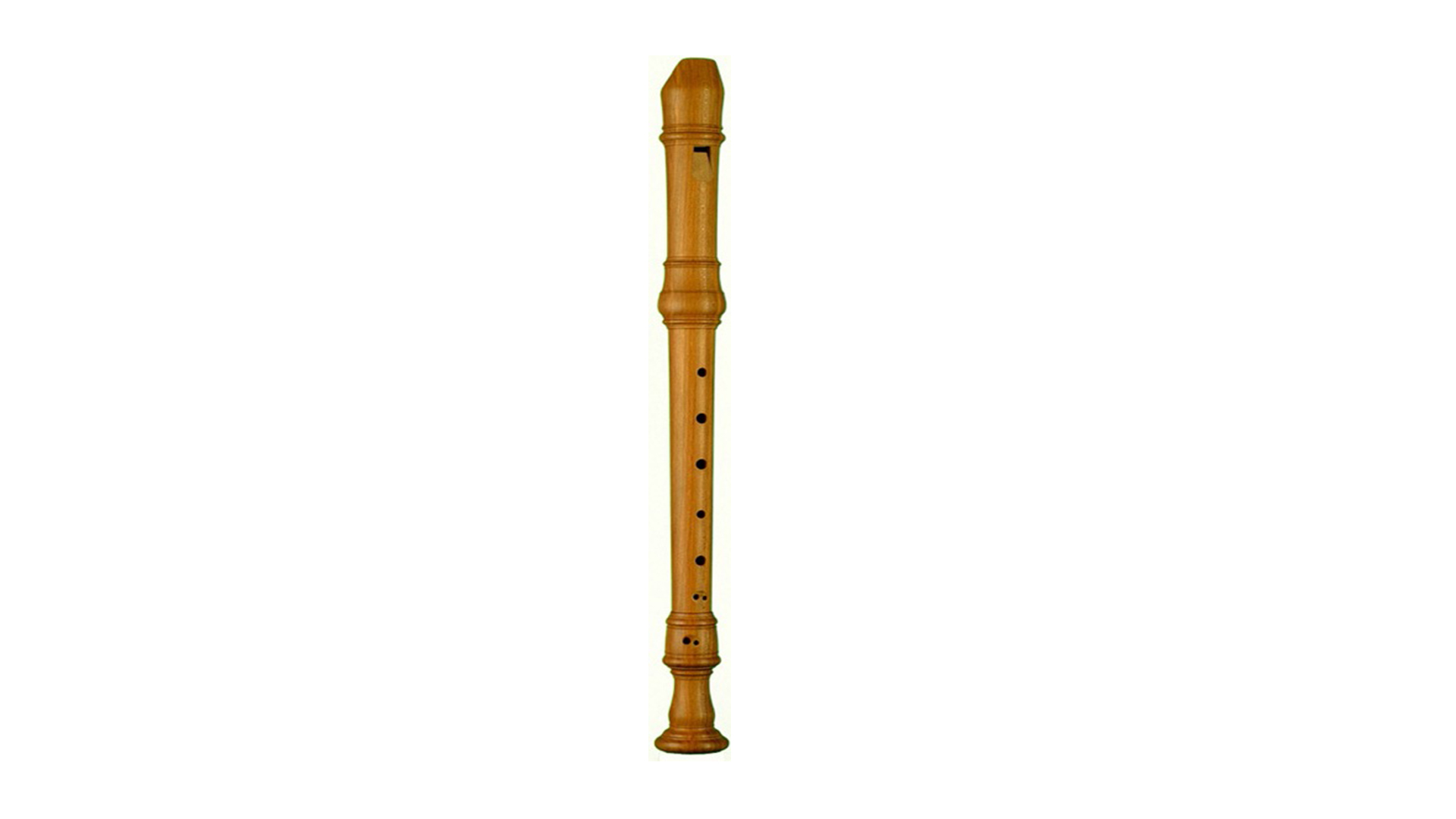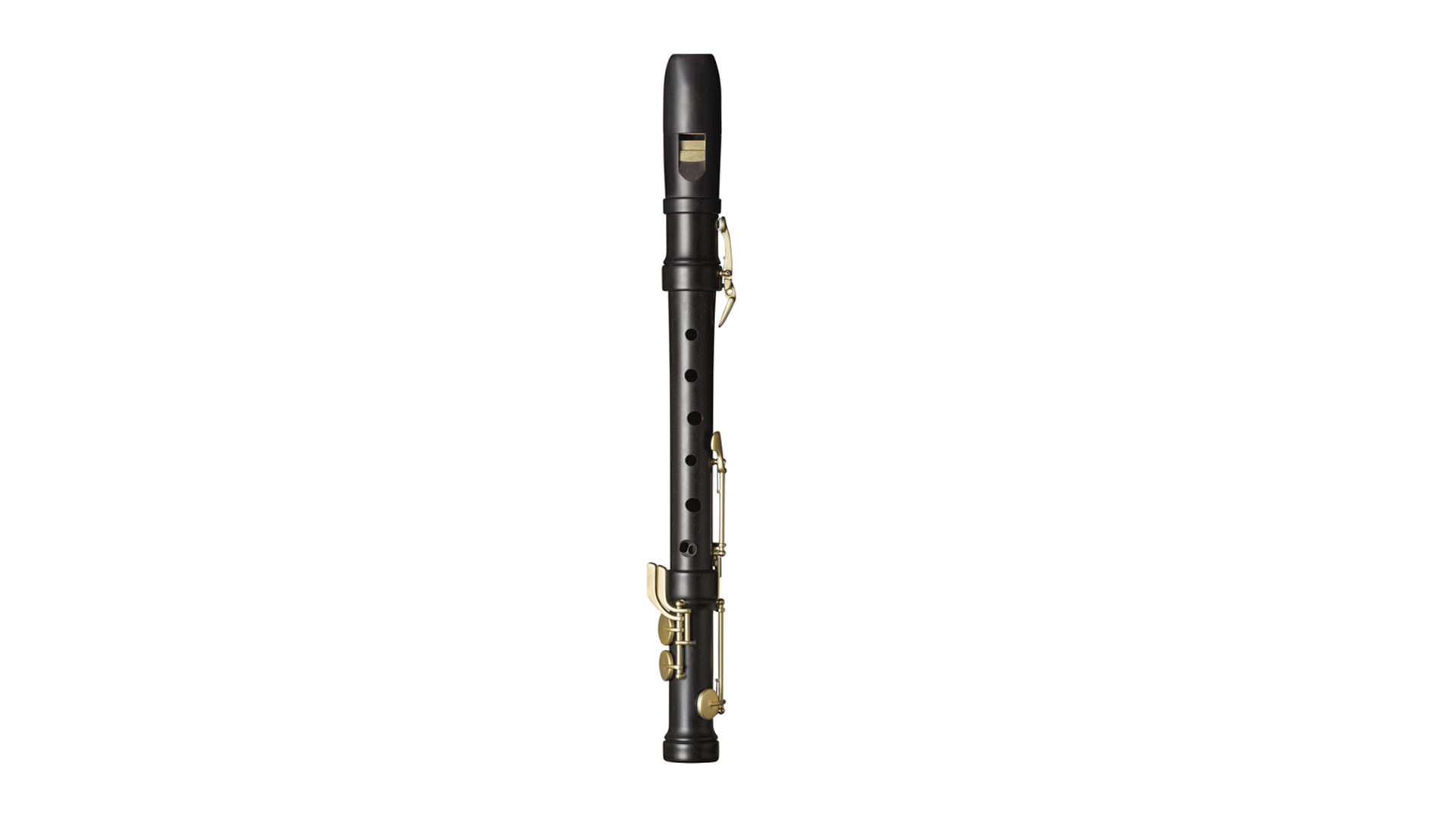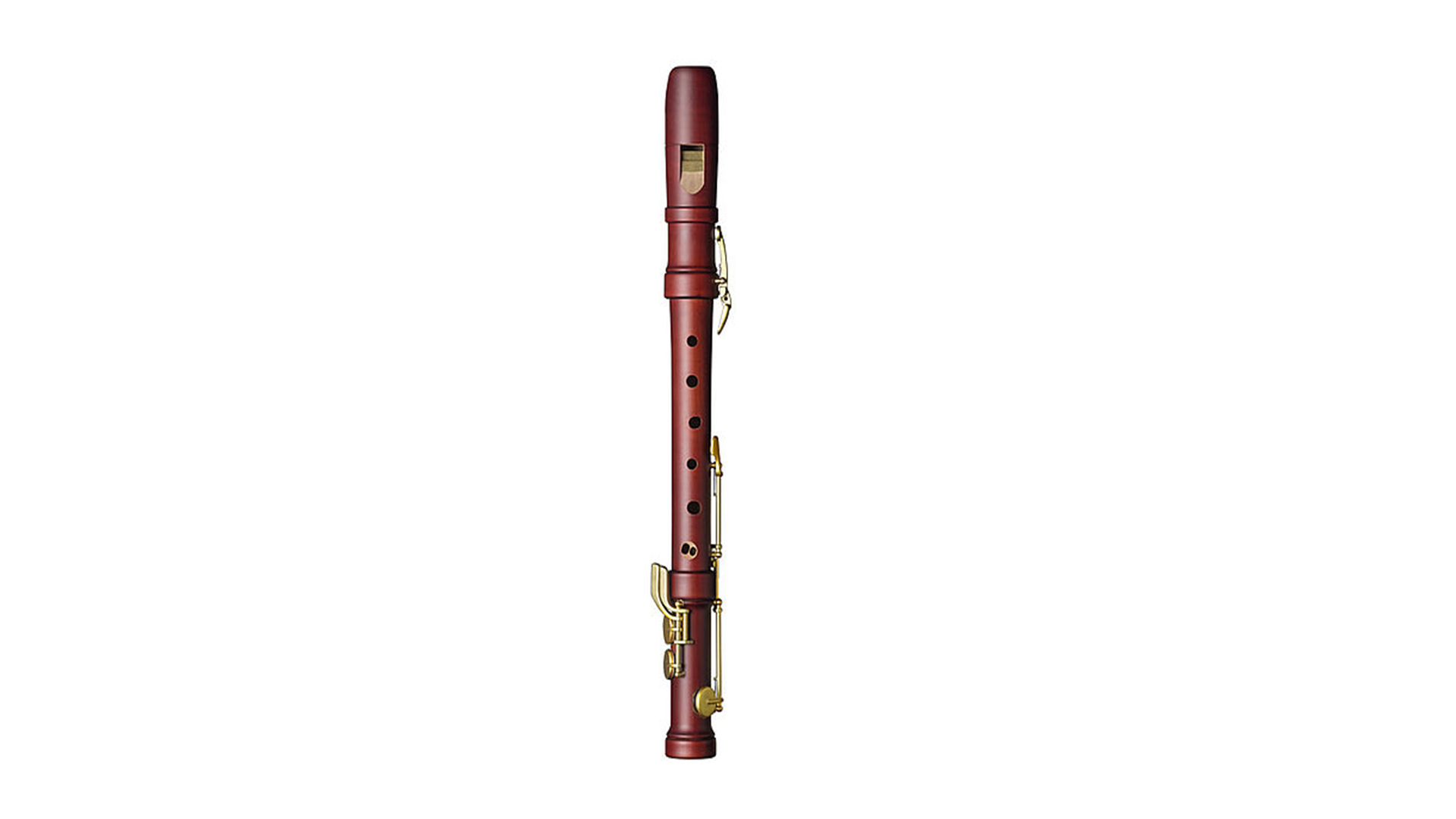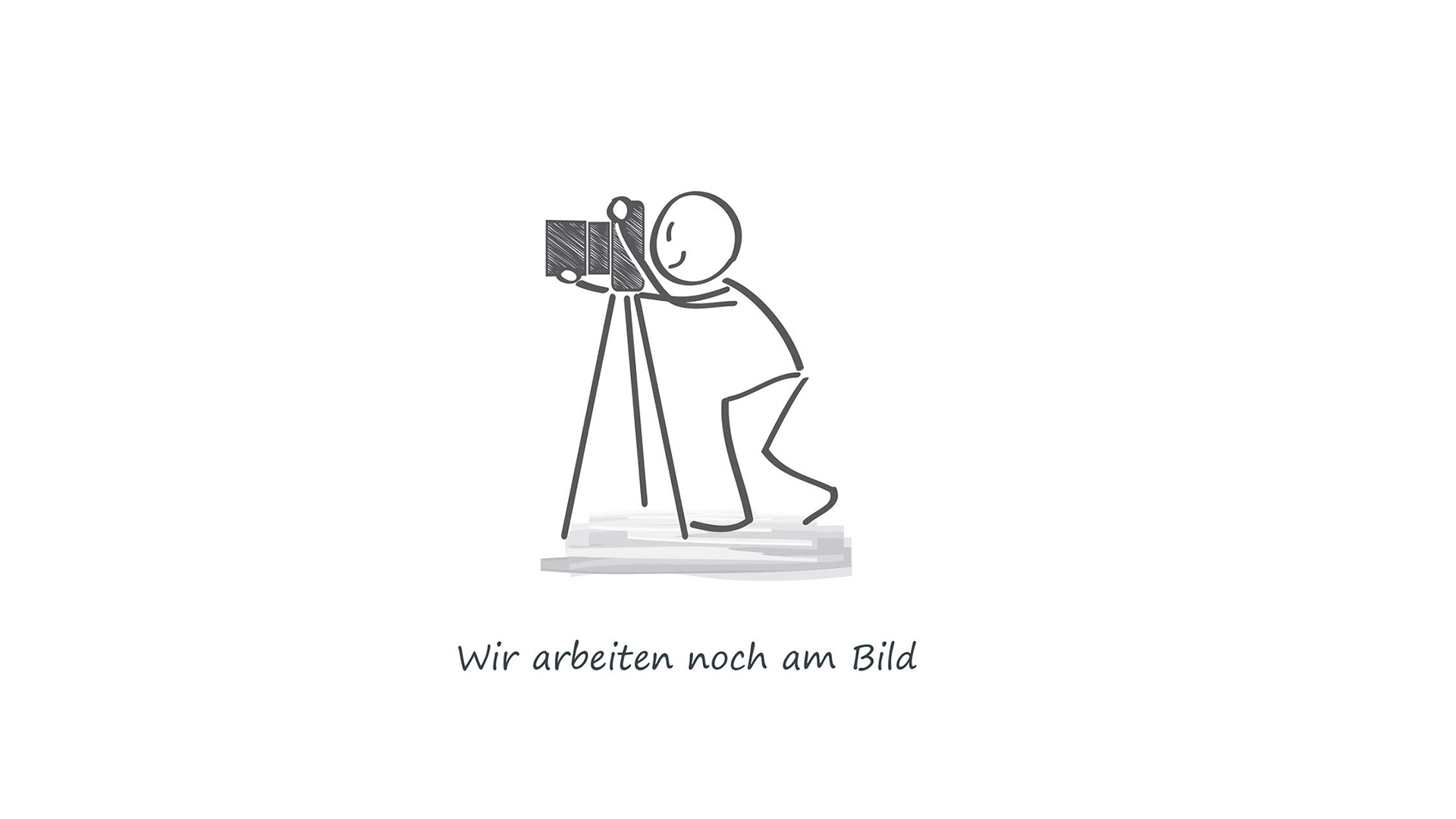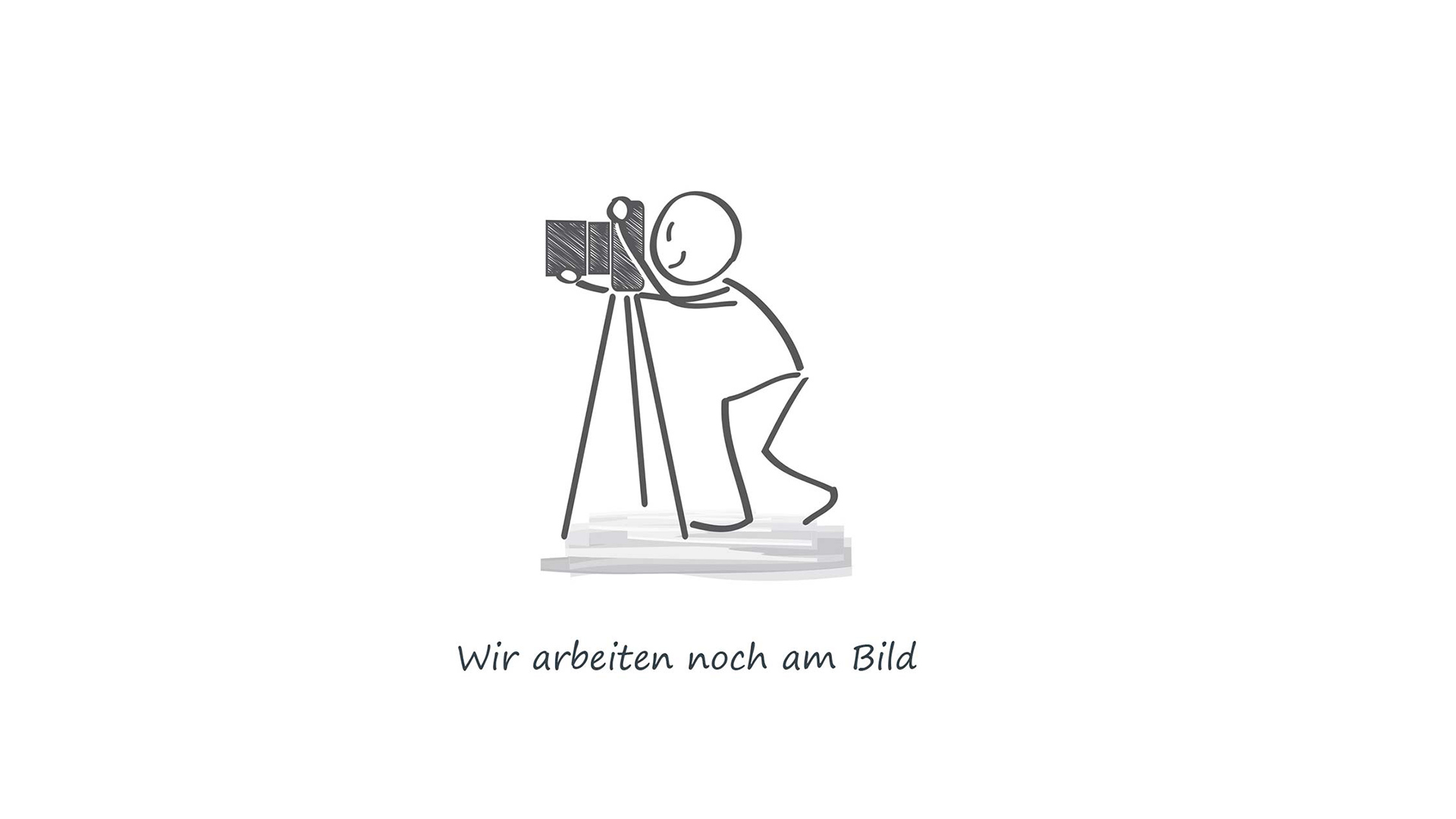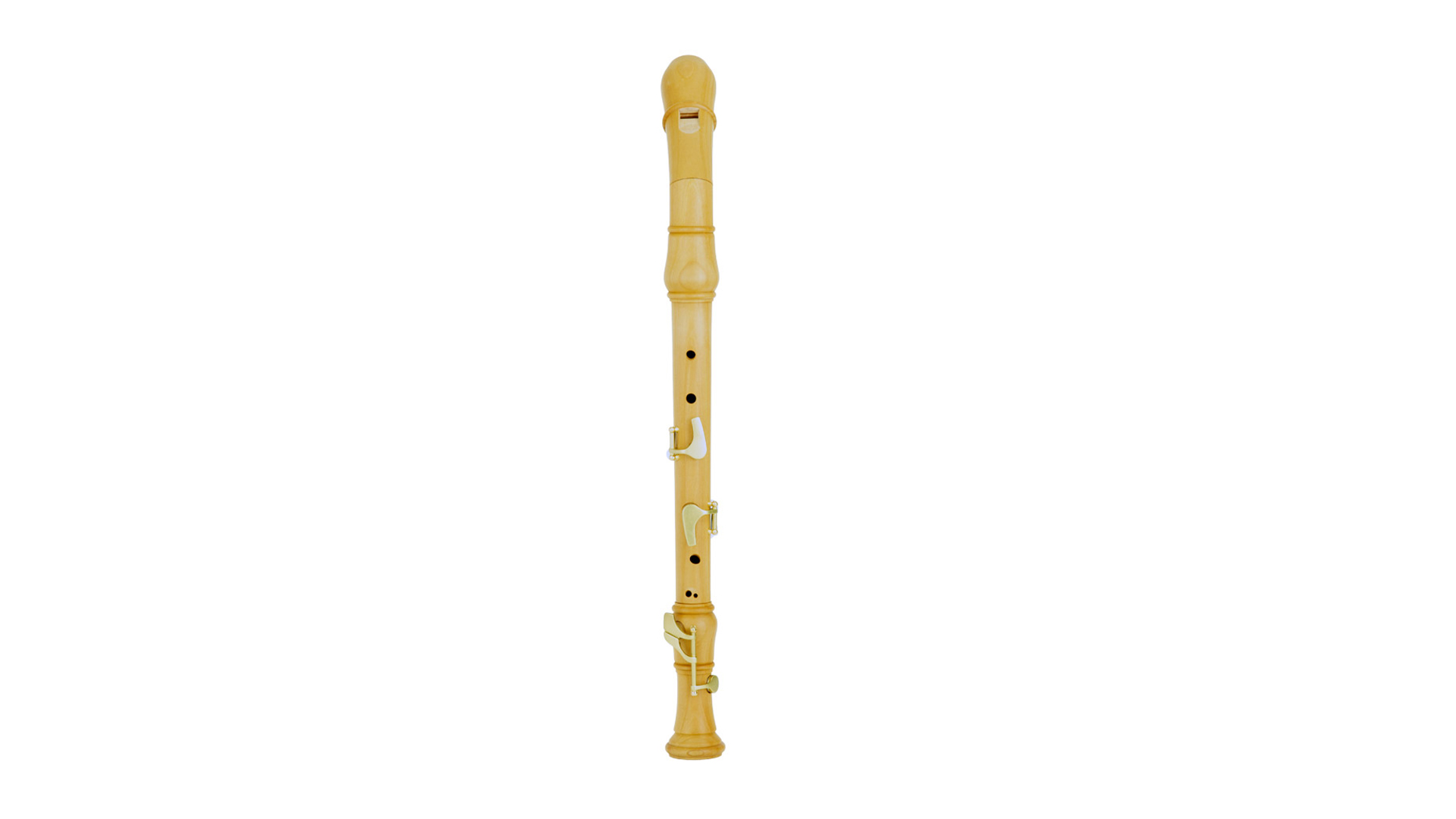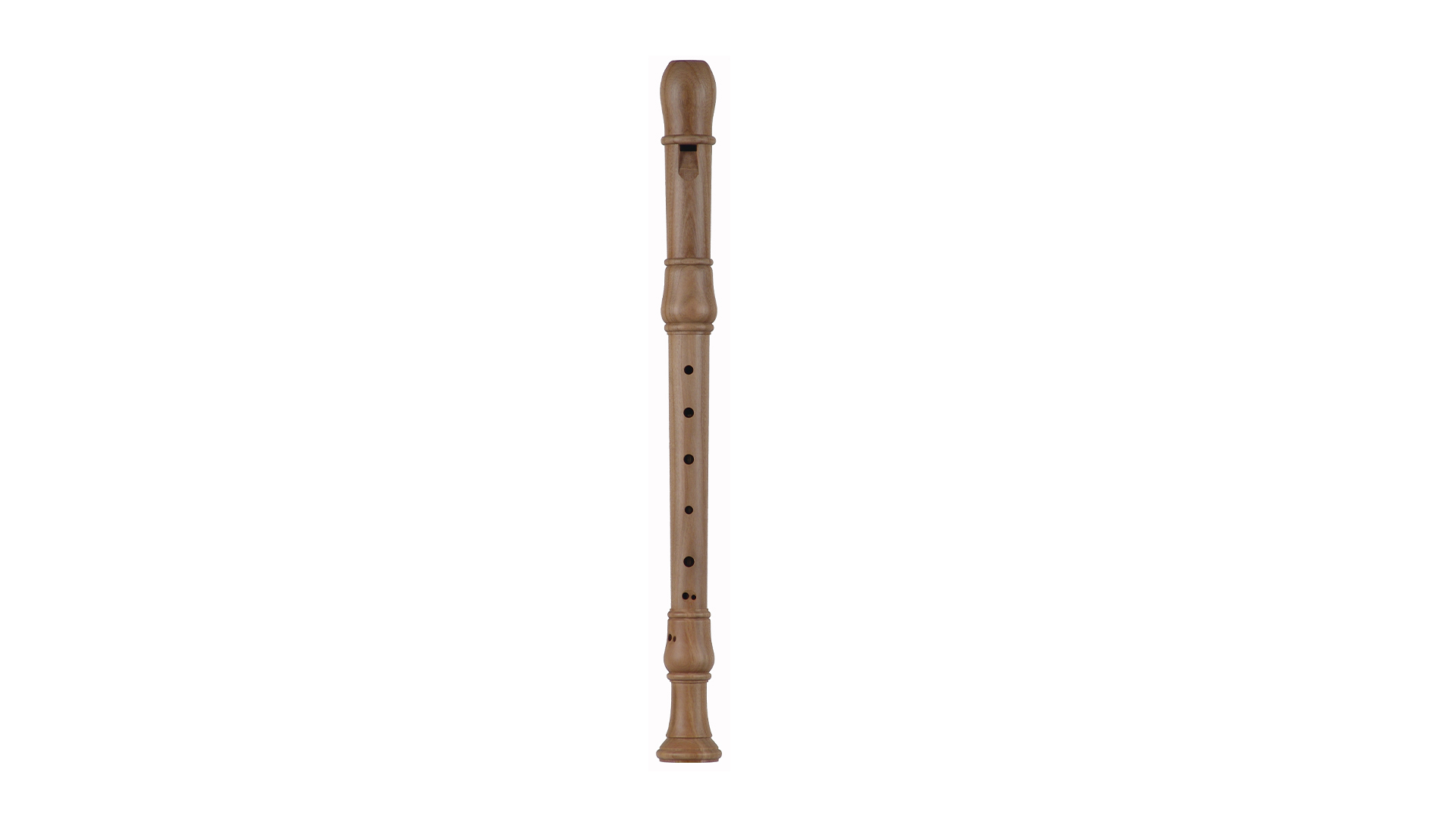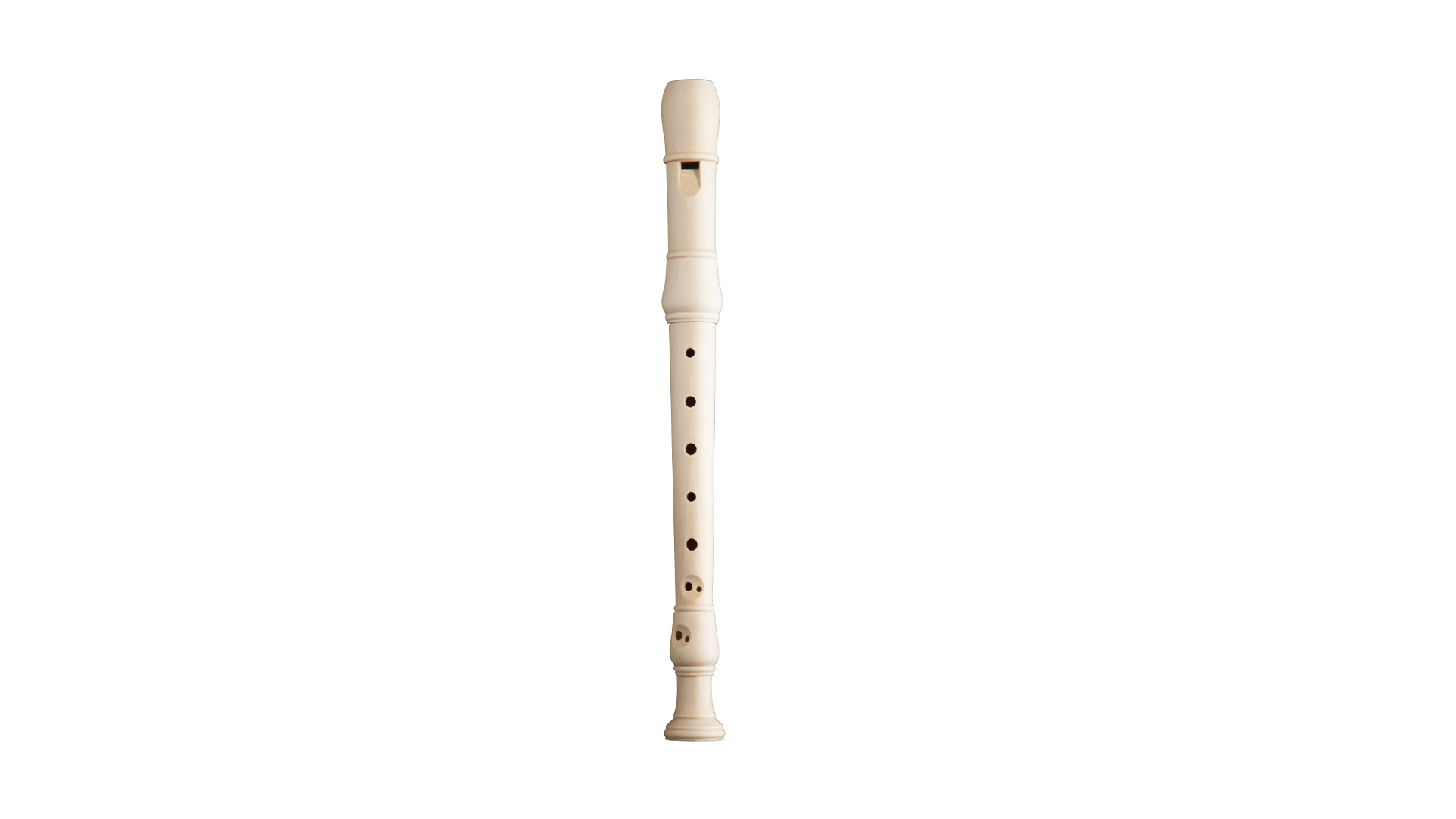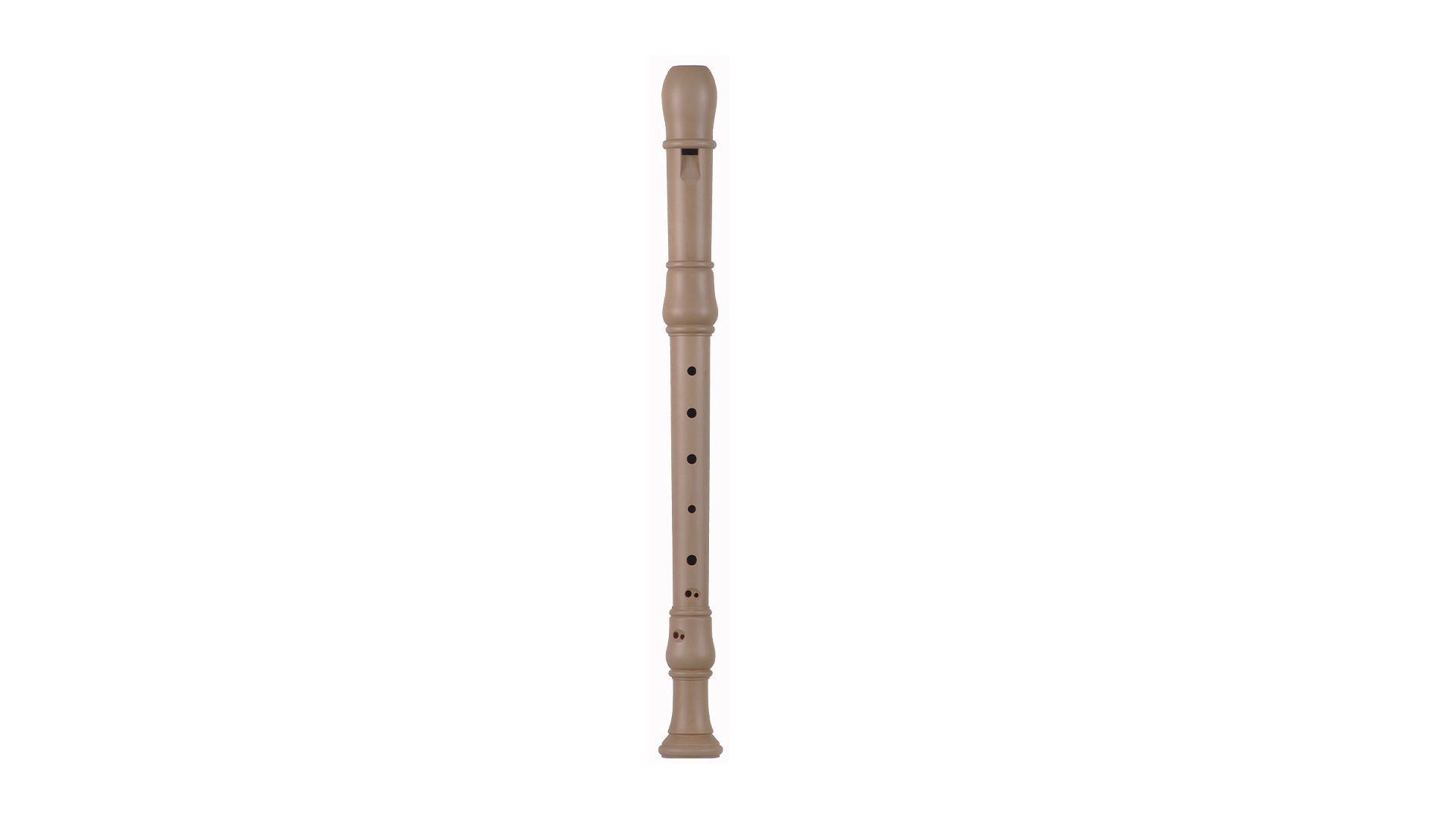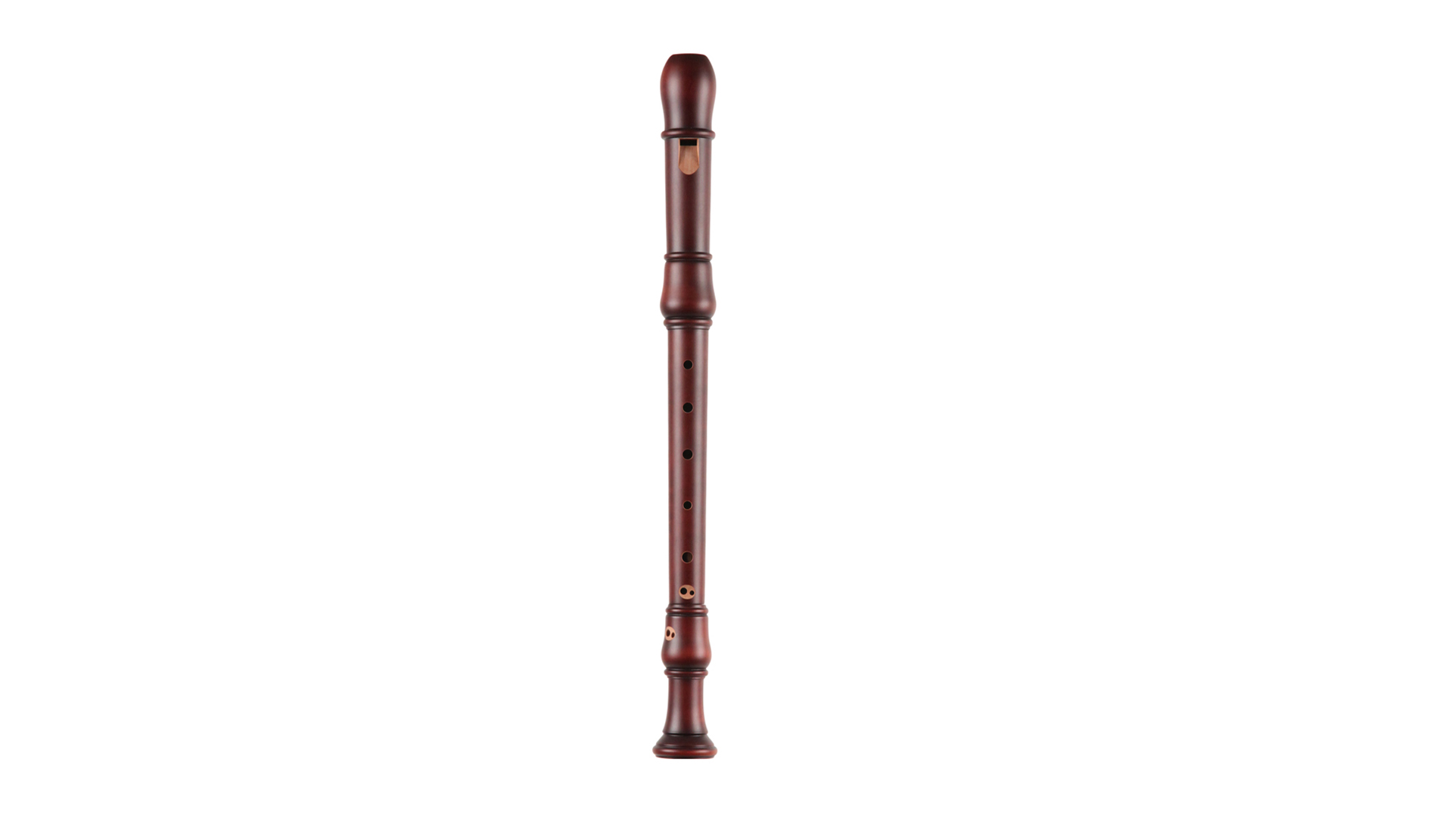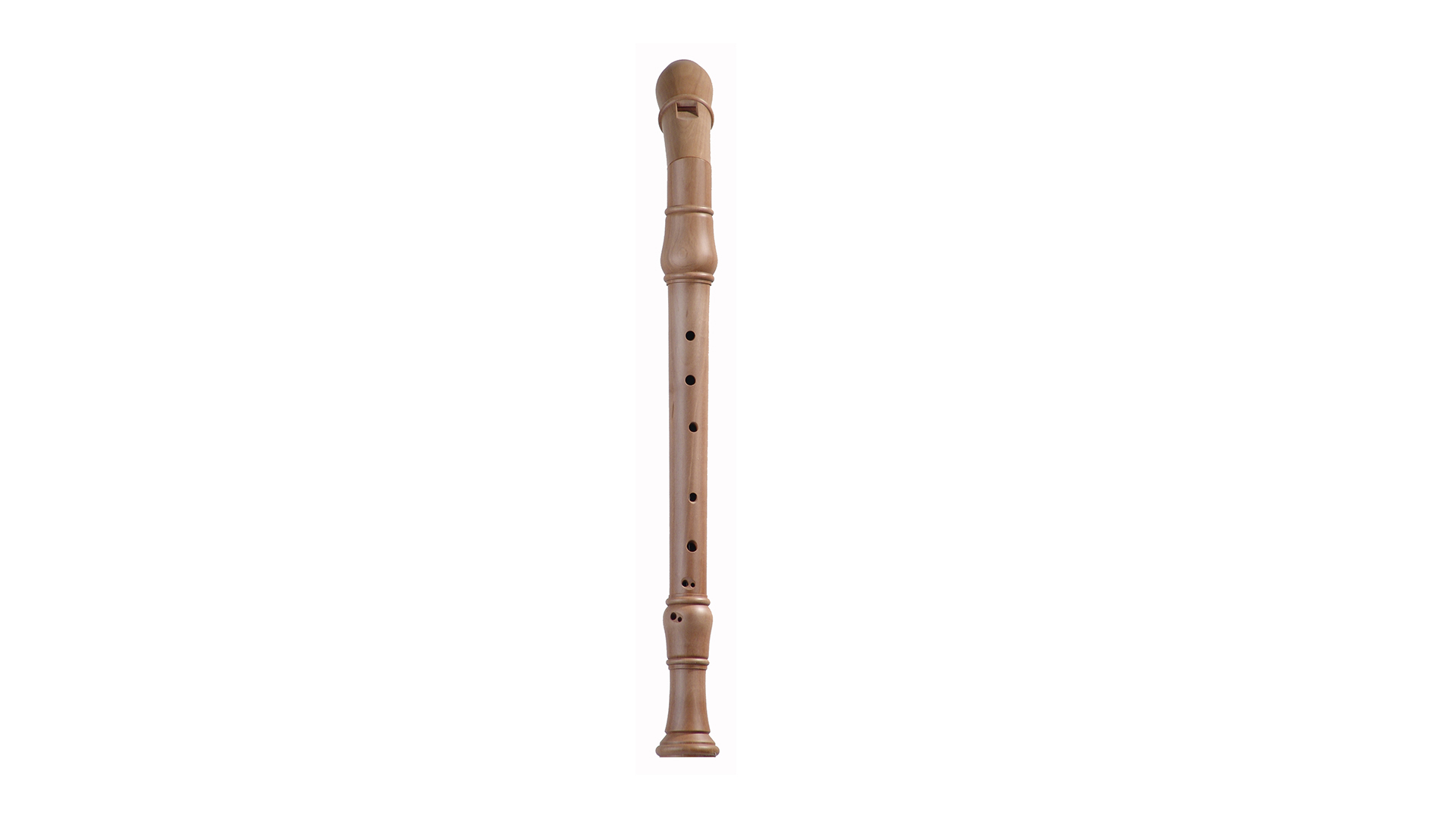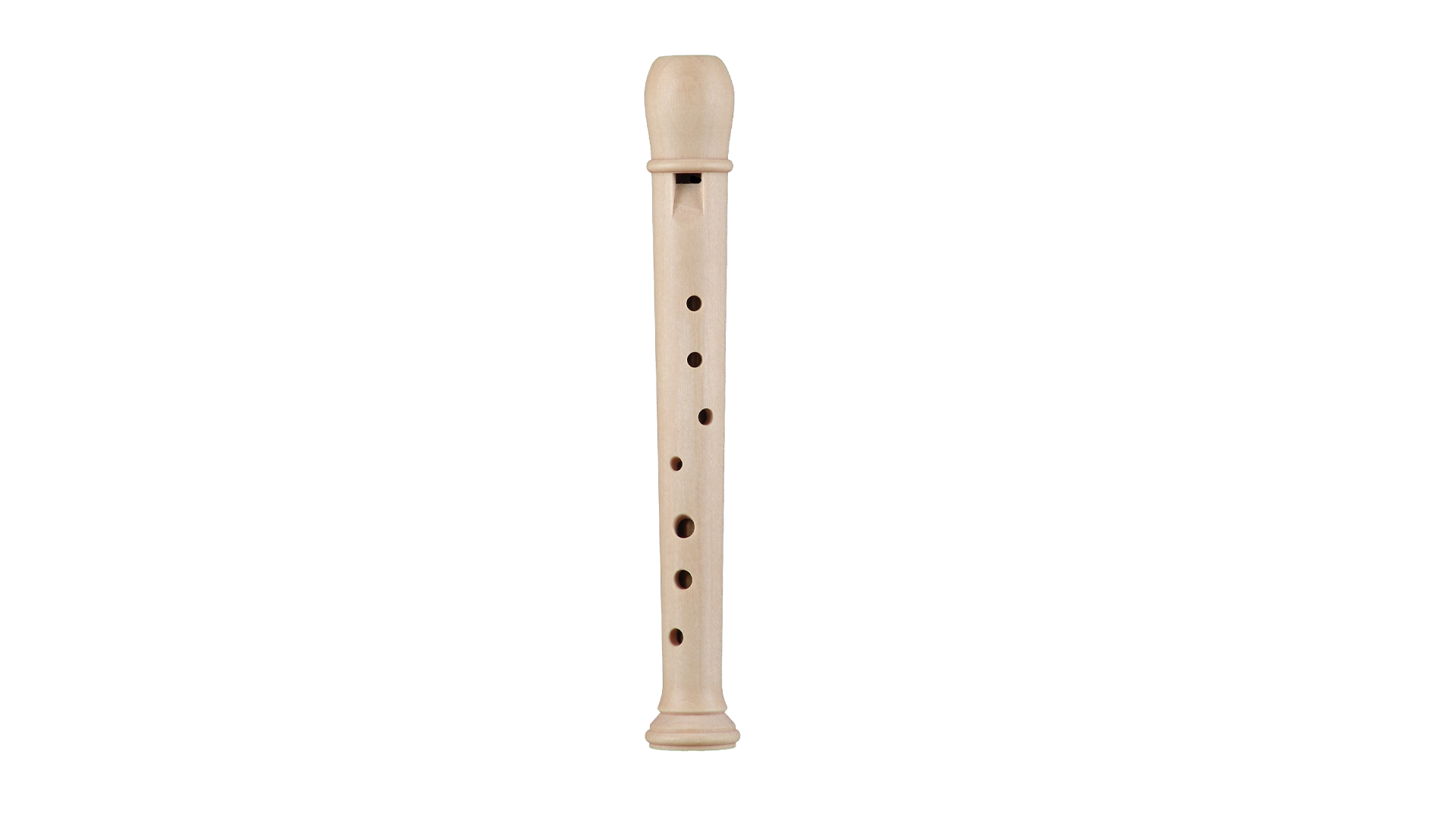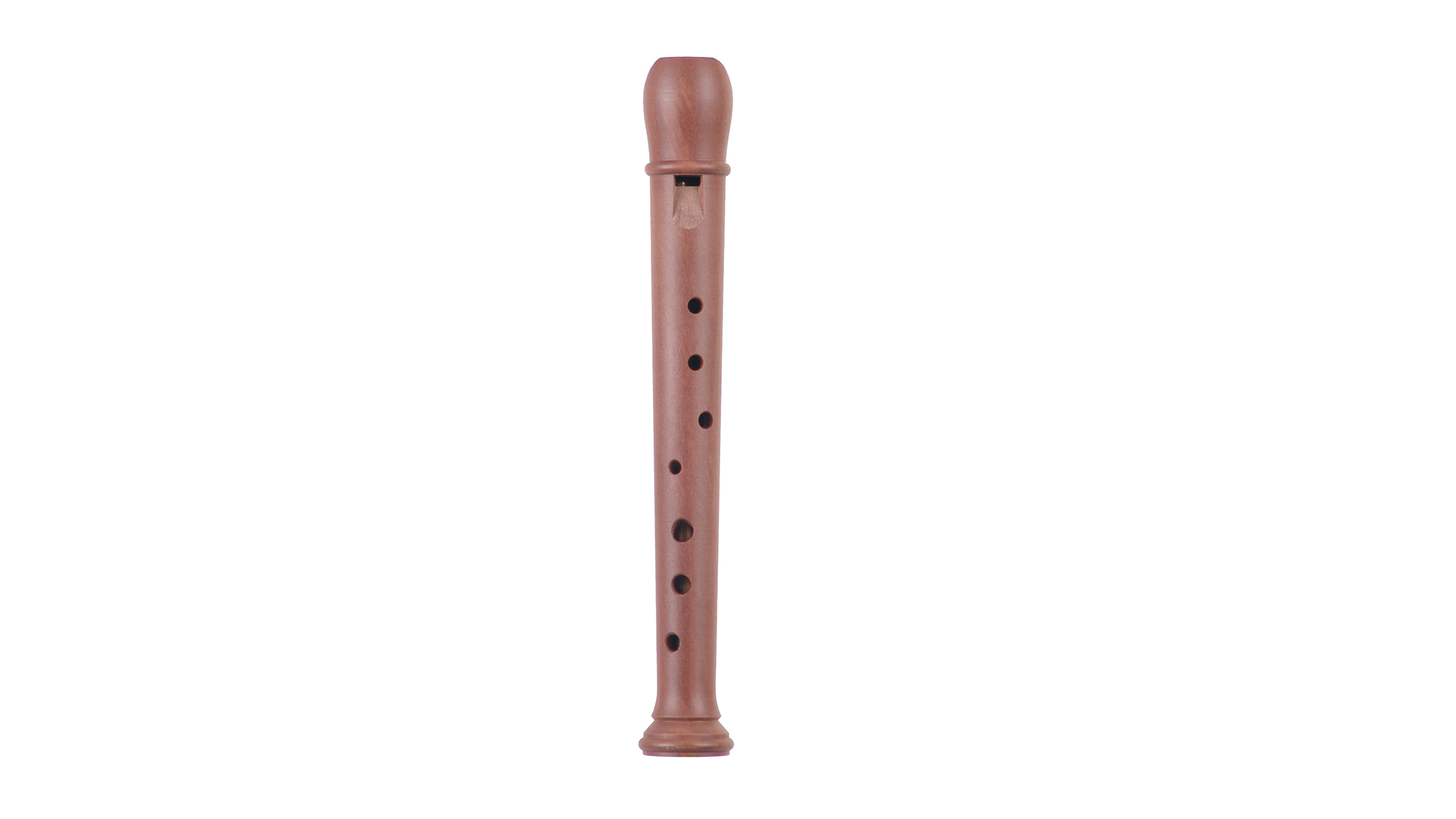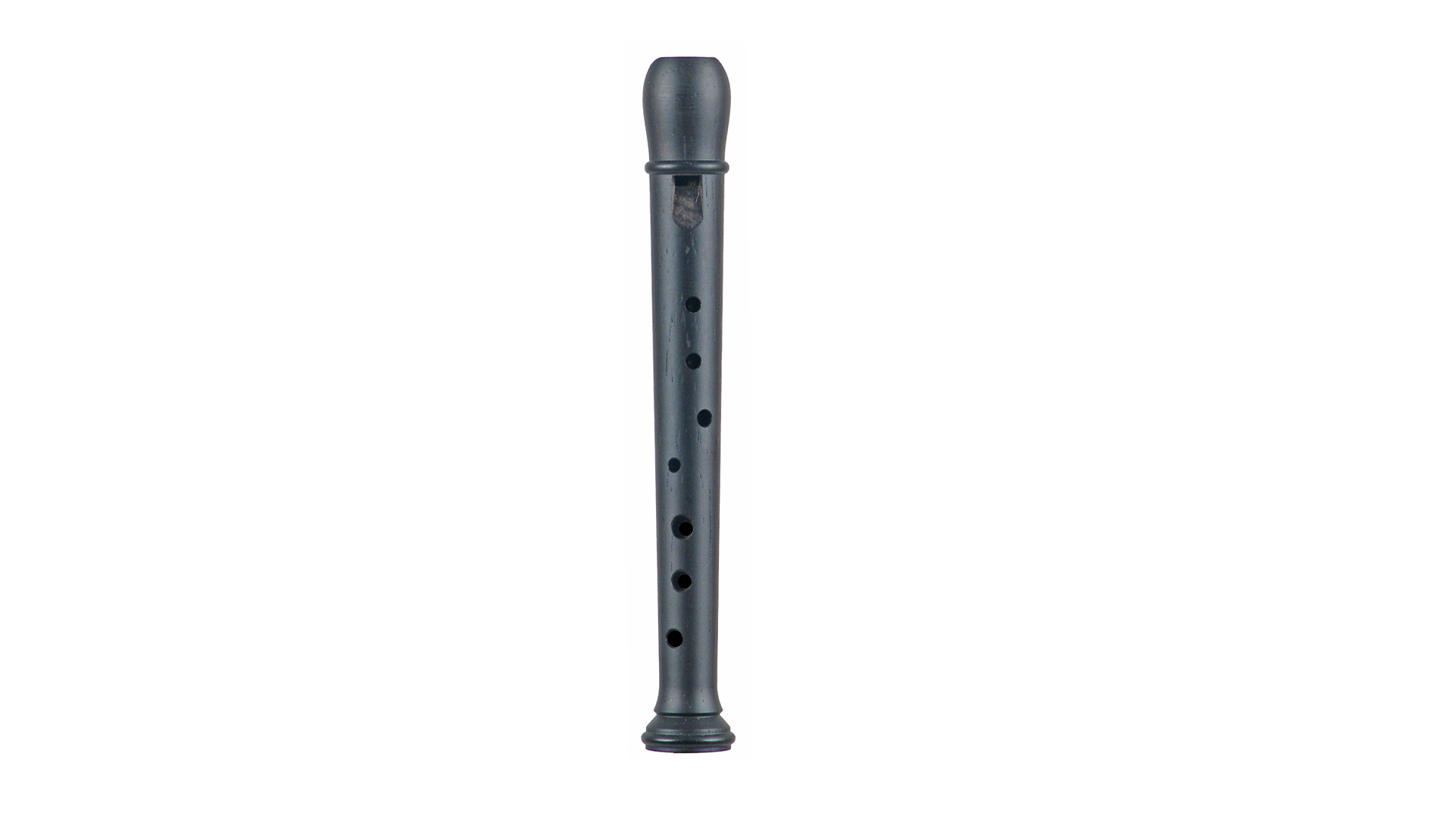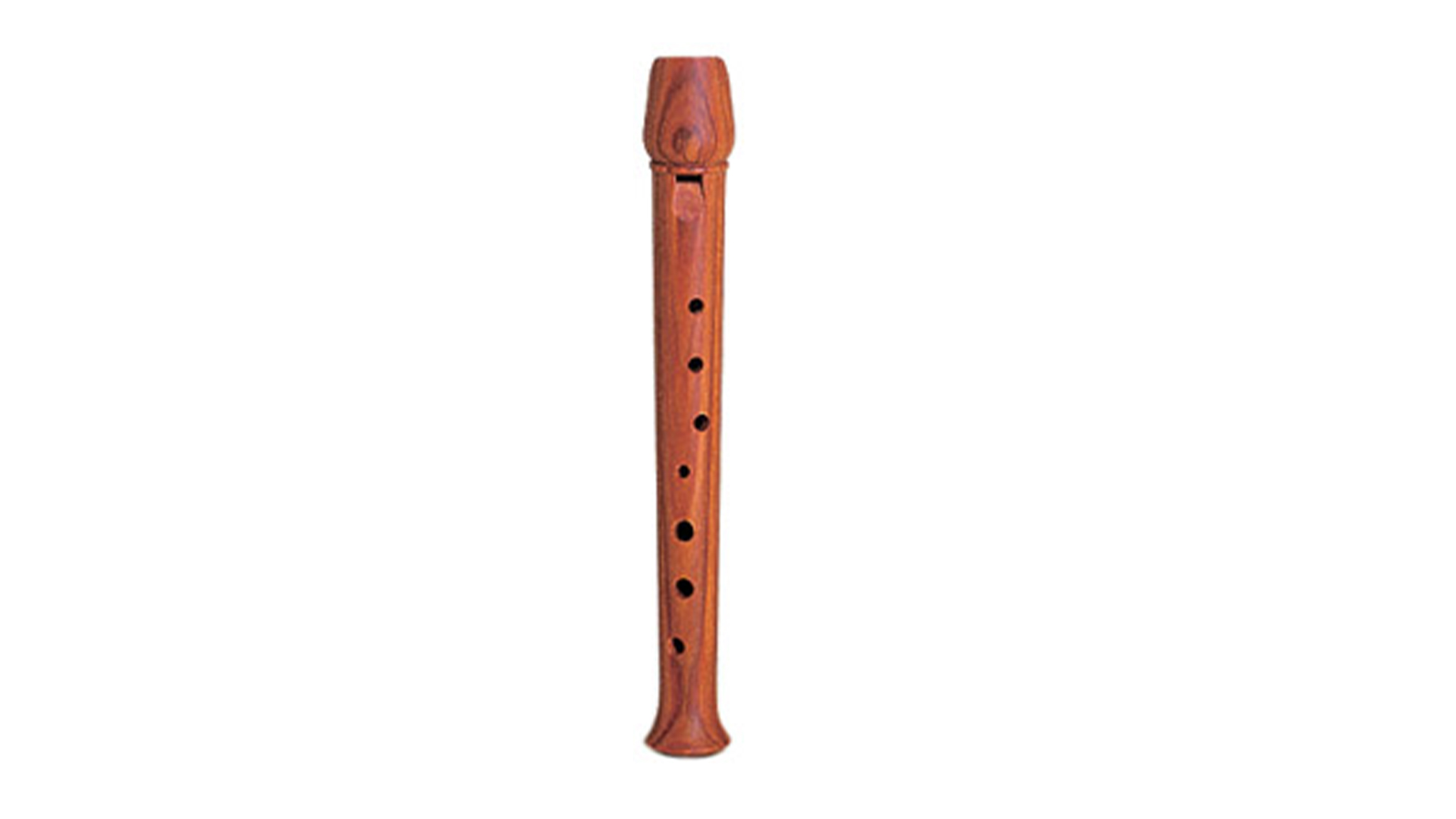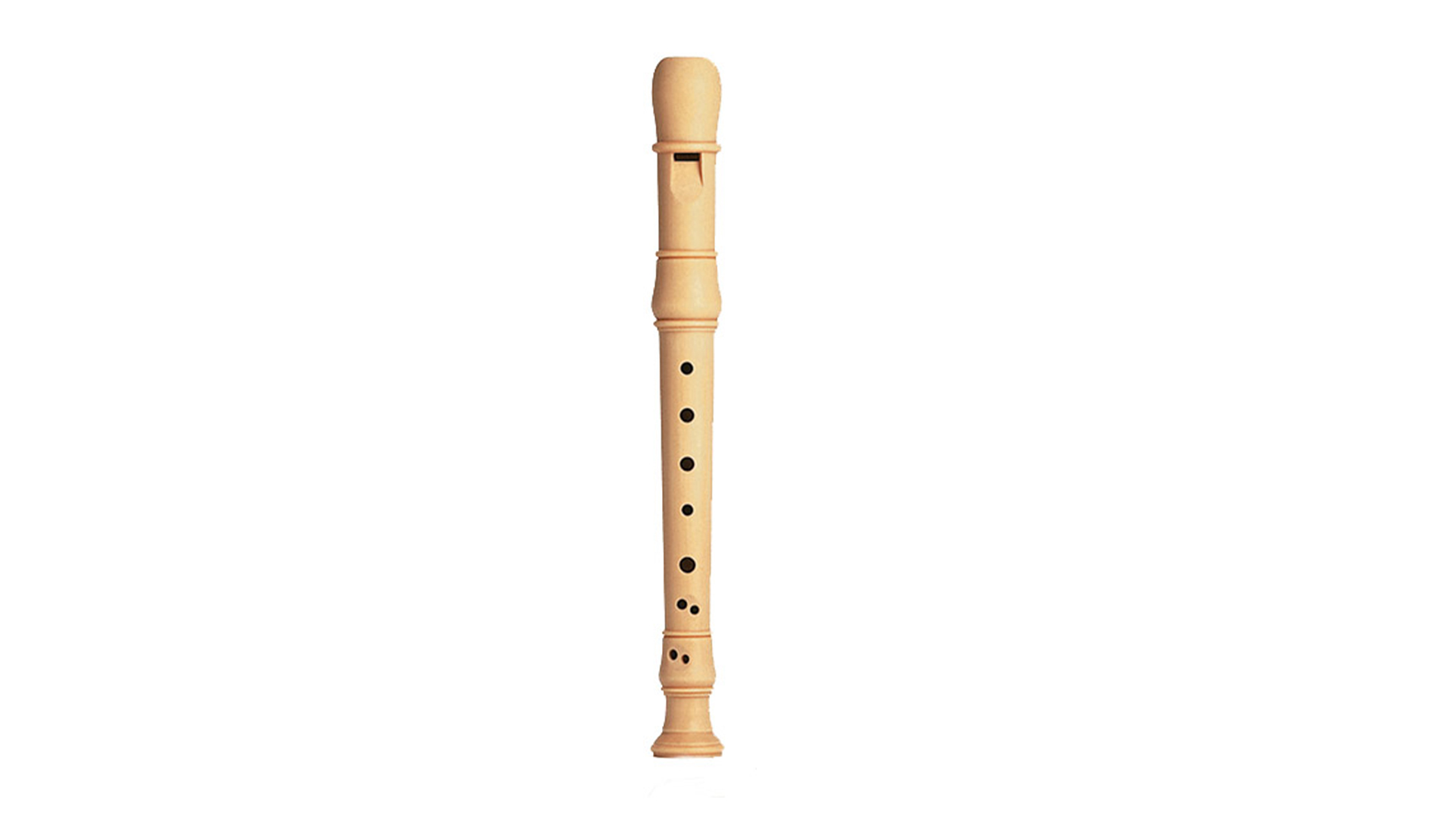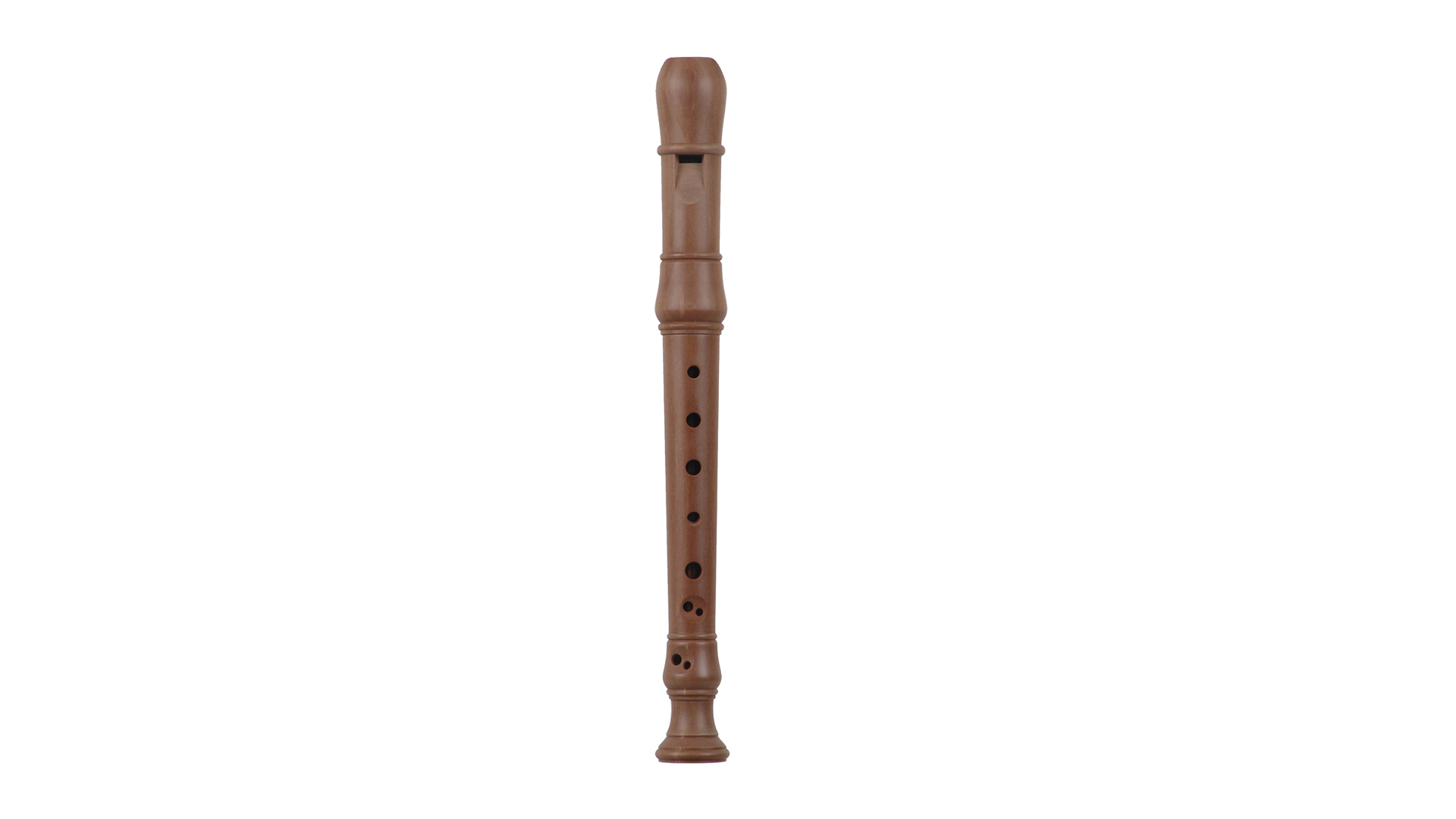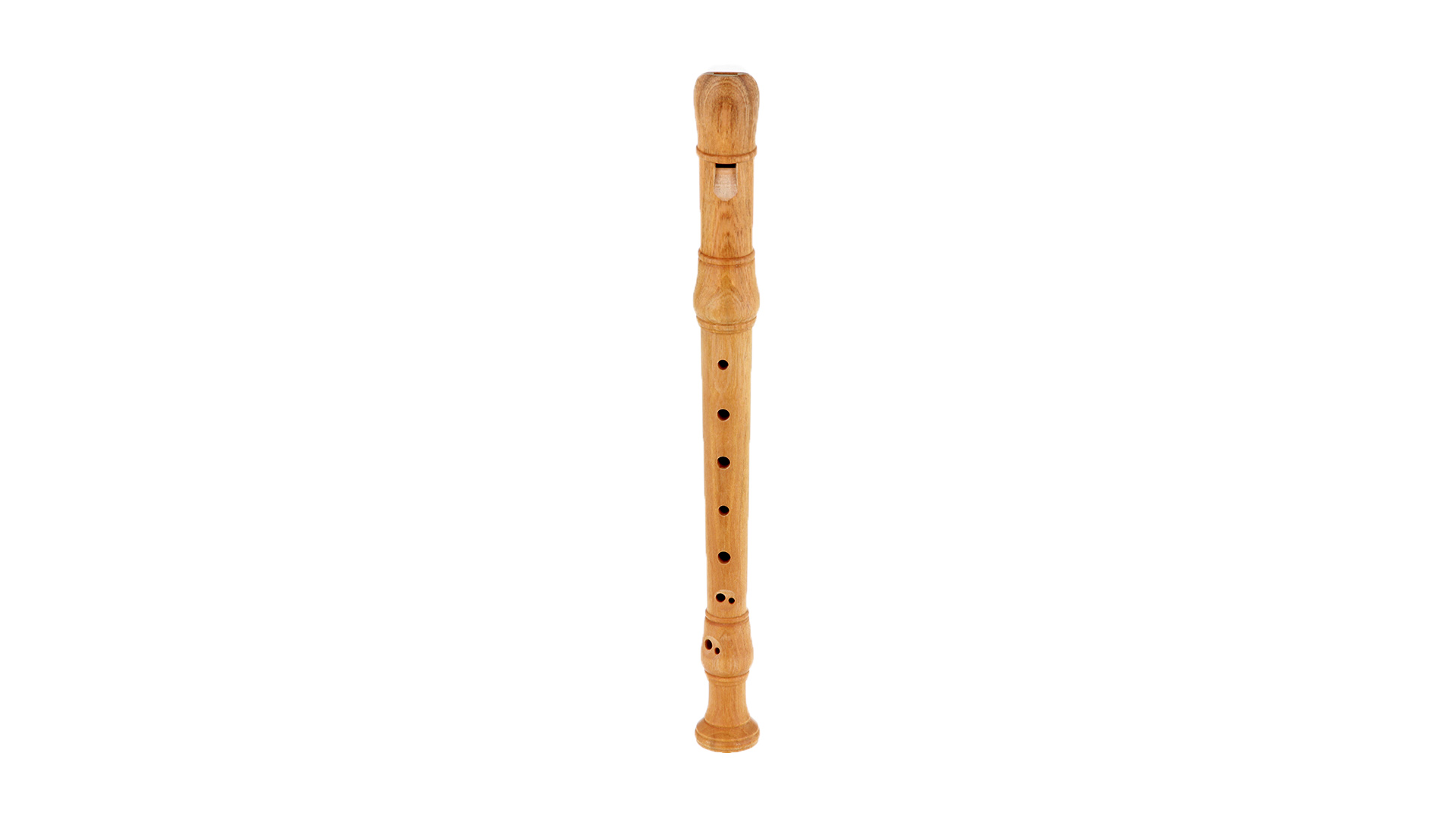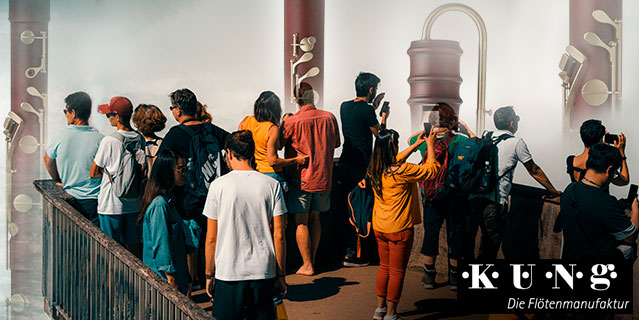
The Swiss company was founded in 1933 in Schaffhausen as a music store. From 1938, the company started to build recorders.
Today especially the bass recorders from Kueng are widely used.
Filter
–
Küng Forth Flute, Pearwood
Baroque Doublehole, Item: F1901-KUE
Natural, 442 Hz
The recorder with the model number: F1901-KUE crafted by Küng is a recorder, the in making music continues to will make joy.
This characteristic is due to the special marriage of the groundbreaking form in fine tuning with the advantages of the material Pearwood.
The material produces in this instrument a unique singularity, by the own unique sound. The qualities can best be described, whereas it is in the nature of things that sounds can always be described very inadequately with words. Therefore the material typical sound of recorders is perceived and described by each person inthe details a bit uniquely. We use these words: Pearwood: Soft, choral sound. Suitable for playing in a group
The bore
The course of the inner bore of the recorder is light cylindroconical. This kind of bore shape gives the recorder such a special tone.
In principle, instruments with wider bore sound warmer, fuller, more fundamental and thus more suitable for ensembles than models with narrower scale.
For which music can the recorder best be used for?
Pearwood is wonderful for recorders used for: Folk, popular music, dance songs and jazz.
To whom is this recorder addressed?
For the above facts it follows that instruments made of Pearwood are especially for ambitious amateurs and advanced players recommendable. A second to be heeded rule is that a valuable instrument makes the interaction as easier than a presumed low-cost bargain.
The windway of the recorder
The windway is the area in the head of the instrument where the breath is formed into a sheet of air. This air leaf is the central starting point of tone production.
In interaction with the labium, the air flow is very quickly alternately directed inwards and outwards. This swinging stream stimulates the air in the bore. And this is the origin of the recorder sound.
This is the reason why the labium must never be damaged. The same applies to the windway.
Otherwise suffer the influenceability of the possible sounds of the recorder.
The windway of the model F1901-KUE of Küng has this windway shape: Straight, conical.
Conical shaped windways accelerate breathing air more than cylindrical windways.
Never violate windway and labium! Their meaning for the instrument is very complex in their design.
Even minor damages here often lead to a total loss!
Fingerings
The recorder Küng F1901-KUE is manufactured in the version: Baroque Doublehole .
Construction of the body
The number of components a recorder shapes in many ways the way it in daily use on the one hand is uncomplicated to handle in terms of easy assembling and on the other hand for the safe transport.
This is a point that should not be underestimated, especially when transporting larger (and sometimes multiple) instruments.
{Experienced ensemble players can tell you a thing or two about this. Or ask members of recorder orchestras will agree.
Leaders of recorder orchestras know how useful good and compact recorder bags are.
Packaging and accessories
The instrument is offered as standard with: Bag
The matching accessories included: Wiper rod, fingering chart, care instructions
Advice before finding another instrument
Ask acquaintances!
The search for your recorder should in no case be influenced by "generally accepted" rules, such as "the material xy does not work at all in an "ensemble/for professionals".
Get your own realizations after trying a recorder. Don't let "generally valid" rules, such as "the flute xy doesn't work at all in an ensemble/for professionals.
Do not let others stop you from playing of an yet unknown instrument.
Your musical taste is as individual as you are.
Therefore, only you can decide which construction will achieve.
Our recommendation is therefore: Test different manufacturers!
After that you will be amazed and can make a confident decision.
Information about instruments with keys
Not always can tone holes be placed in the places in the body that are easy to grasp with the fingers. Especially with larger instruments sit for acoustic reasons some tone holes ergonomically not to reach. On such instruments, by the instrument maker keys are added, which make gripping clearly easier, or possible in the first place.
This allows it to be {pleasant|light|ergonomic|conspicuous|above average| good play even by players with smaller hands.
The instrument F1901-KUE has the following flaps:
Küng Forth Flute, Rosewood
Baroque Doublehole, Item: 1906-KUE
Natural, 442 Hz
This Forth Flute with the model number: 1906-KUE built by Küng is a companion, the in making music new can make joy.
This peculiarity is due to the clever combination of the special form in interplay with the sound of the material Rosewood.
The material makes this instrument a unique singularity, by the own special sound. The characteristics can be characterized so: inadequately with words. Therefore the sound of recorders is perceived and described by each person inthe details somewhat varying. We use these words: Rosewood: Very noble, throaty sound
The bore
The geometry of the inner bore of the instrument is light cylindroconical. This kind of bore course grants the recorder such a typical tone.
In principle, instruments with wider bore sound warmer, fuller, more fundamental and thus more suitable for ensembles than models with narrower inner bore.
For what styles can the recorder best be used for?
Rosewood is particularly for woodwinds used for: Folk, popular music, dance songs and jazz.
To whom is this recorder addressed?
For the above facts it follows that recorders made of Rosewood are especially for ambitious amateurs and advanced players suitable. A second important law is that a higher instrument makes the interaction in most cases pleasant at first glance low-cost offer.
The windway of the recorder
The windway is the area in the instrument headpiece where the blowing air is formed into a thin sheet of air. This air leaf is the basis of the instruments tone.
In interaction with the labium, the air stream is very quickly alternately directed inwards and outwards. This swinging flow stimulates the air in the body of the instrument. And this is the origin of the recorder tone.
This is the reason why the labium must not be damaged in any case. The same rule applies to the windway.
Otherwise suffer the musical shaping ability of the attainable sounds of the recorder.
The windway of the model 1906-KUE of Küng has this windway shape: Straight, conical.
Conical shaped windways accelerate breathing air more than cylindrical windways.
Never underestimate windway and labium! Their meaning for the function is exceedingly complex in their geometric shape.
Damages here often lead to a total loss!
Fingerings
The recorder Küng 1906-KUE is delivered in the version: Baroque Doublehole .
Construction of the body
The method of construction a woodwind instrument influences strongly the way the recorder in daily use on the one hand is uncomplicated to handle in terms of easy assembling and on the other hand for the convenient transport.
A point that becomes especially important when larger or multiple instruments be.
{Experienced ensemble players can tell you a thing or two about this. Or ask leaders of recorder ensembles.
Leaders of recorder choirs know how useful good and compact recorder transport packaging is.
Packaging and accessories
The instrument is offered as standard with: Bag
The following accessories included: Wiper rod, fingering chart, care instructions
Advice for finding a new instrument
Get expert advice!
The search for your new recorder should in no case be influenced by opinions prevailing in your environment.
Get your own realizations after trying a recorder. Don't let "expert"-opinions.
Do not let others stop you from playing a unkown recorder model.
Your musical taste is as unique as you are.
Therefore, only you can decide which instrument will personally inspire.
Our recommendation is therefore: Try new concepts!
After that you will be delighted and can make a safe decision.
Information about instruments with keys
Not always can tone holes be placed in the places in the instrument that are easy to reach with the fingers. Especially with deep recorders sit for acoustic reasons tone holes adequate to reach. On these instruments, by the instrument maker keys are added, which make gripping clearly easier, or possible in the first place.
This allows it to be {pleasant|light|ergonomic|conspicuous|above average| good play even by players with smaller hands.
The instrument 1906-KUE has the following flaps:
Küng F-Alto, Boxwood
Baroque Doublehole, Item: 4413-MAR
Natural, 442 Hz
The recorder with the model number: 4413-MAR manufactured by Küng is a musical tool, that in lessons, or performing constantly can make joy.
This property is based to a large part on the special combination of the groundbreaking instrument model in combination with the qualities of the material Boxwood.
The material creates in this instrument a unique characteristic, by its materialtypical preferences. The special qualities can be described: very inadequately with words. Therefore the material typical sound of recorders is perceived and described by each person in details slightly uniquely. We say: Boxwood: Powerful sound, carrying in the treble.
The bore
The course of the inner bore of the instrument is light cylindroconical. This kind of bore shape grants the instrument this typical tone.
In principle, recorders with wider bore sound warmer, fuller, more fundamental and thus more suitable for ensembles than instruments with narrower scale.
For what styles can this instrument best be used for?
Boxwood is wonderful for woodwinds used for: Ensemble, choral and solo performance.
To whom is this recorder addressed?
This means that recorders made of Boxwood are especially for ambitious amateurs and advanced players recommendable. A second important rule is that a better instrument makes the learning progress as enriching apparently low-cost offer.
The windway of a recorder
The windway is the area in the instrument headpiece where the blowing air of the musician is formed into a thin sheet of air. This air leaf is the central starting point of the instruments tone.
In interaction with the labium, the air flow is very quickly alternately directed inwards and outwards. This swinging stream stimulates the air in the body of the instrument. This is the origin of the recorder sound.
This is the reason why the labium must never be damaged. The same rule applies to the windway.
Otherwise suffer the variability of musical expressiveness of the recorder.
The windway of the model 4413-MAR of Küng has this windway shape: Curved, conical.
Conical shaped windways accelerate breathing air more than cylindrical windways.
Never underestimate windway and labium! Their meaning for the recorder is very complex in their design.
Damages here often lead to a total loss!
Fingerings
The recorder Küng 4413-MAR is offered in the following version: Baroque Doublehole .
Construction
The number of individual parts a musical instrument influences in many ways the way with which the flute in daily use on the one hand is simple to handle in terms of easy gripping and on the other hand for the compact transport.
This is a point that should not be underestimated, especially when transporting larger (and sometimes multiple) instruments.
{Experienced ensemble players can tell you a thing or two about this. Or ask leaders of recorder ensembles.
Leaders of recorder choirs know how useful good and compact recorder packaging is.
Packaging and accessories
The recorder is offered as standard with: Case
The following accessories included: Wiper rod, pivot grease, fingering chart, care instructions
Notes before finding another instrument
Inform yourself in detail!
The search for your new recorder should in no case be influenced by opinions prevailing in your environment.
Get your own realizations after trying an instrument. Don't let "expert"-opinions.
Do not let others stop you from playing a unkown brand.
Your musical perception is as individual as you are.
Therefore, only you can decide which wind tunnel shape will inspire.
Our recommendation is therefore: Try different instruments!
After that you will be surprised and can make a safe decision.
Information about instruments with keys
Not always can the tone holes be drilled in the places in the the that are easy and pleasant to reach with the fingers. Especially with deep instruments sit for acoustic necessities some tone holes ergonomically not to reach. On such instruments, by the instrument maker keys are added, which make gripping expressed easier, or possible in the first place.
This allows it to be {pleasant|light|ergonomic|conspicuous|above average| good play even by players with smaller hands.
The instrument 4413-MAR has the following flaps:
Küng F-Alto, Grenadilla
Baroque Doublehole, Item: 4407-MAR
Natural, 442 Hz
The instrument with the article number: 4407-MAR crafted by Küng is a musical tool, that in lessons, or performing continues to can make happy.
This peculiarity is based to a large part on the special composition of the genius composition in interplay with the sound of the material Grenadilla.
The material makes this instrument a pleasant singularity, by the own extraordinary sound. The special qualities can be characterized so: inadequately with words. Therefore the sound of recorders is perceived and described by each person inthe details slightly uniquely. We say: Grenadilla: Clear, rich in overtones and powerful sound. Very portable.
The bore
The course of the inner bore of the recorder is light cylindroconical. This kind of bore shape grants the instrument this characteristic sound.
In principle, recorders with wider bore sound warmer, fuller, more fundamental and thus more suitable for ensembles than instruments with narrower inner bore.
For what styles can this instrument best be used for?
Grenadilla is greatly suitable for woodwinds used for: Ensemble, choral and solo performance.
To whom is this instrument addressed?
This means that recorders made of Grenadilla are especially for ambitious amateurs and advanced players suitable. A further rule is that a valuable instrument makes the learning progress naturally beautiful apparently low-cost offer.
The windway of a recorder
The windway is the area in the head of the recorder where the blowing air of the musician is formed into a thin sheet of air. This air leaf is the basis of the instruments tone.
At the labium, the air stream is very quickly alternately directed inwards and outwards. This swinging flow stimulates the air in the body of the instrument. And this is the origin of the recorder tone.
This is the reason why the labium must never be damaged. The same rule applies to the windway.
Otherwise suffer the artistic applicability of the instrument.
The windway of the instrument 4407-MAR of Küng has this windway shape: Curved, conical.
Conical windways accelerate the air leaf more than cylindrical shaped windways.
Never underestimate windway and labium! Their meaning for the sound is uncommon complex in their geometric shape.
Damages here often lead to a total loss!
Fingerings
The model Küng 4407-MAR is delivered in the version: Baroque Doublehole .
Construction
The number of individual parts a woodwind instrument influences in many ways the way the recorder in use on the one hand is simple to handle in terms of easy assembling and on the other hand for the compact transport.
A point that becomes especially important when larger or multiple instruments have.
{Experienced ensemble players can tell you a thing or two about this. Or ask veteran ensemble leaders.
Leaders of recorder choirs know how useful good and compact recorder cases are.
Packaging and accessories
The recorder is delivered as standard with: Case
The matching accessories included: Wiper rod, pivot grease, fingering chart, care instructions
Hints before finding another instrument
Ask acquaintances!
The search for your recorder should never be influenced by well-meaning advice.
Get your own realizations after testing an instrument. Don't let "generally valid" rules, such as "the material xy doesn't work at all in an ensemble/for professionals.
Do not let others stop you from playing of an yet unknown instrument.
Your musical taste is as individual as you are.
Therefore, only you can decide which instrument concept will personally touch.
Our recommendation is therefore: Try different manufacturers!
After that you will be amazed and can make a confident decision.
Information about instruments with keys
Not always can the tone holes be placed in places in the the that are comfortable and easy to reach with the fingers. Especially with deep recorders sit for acoustic reasons some tone holes adequate to reach. On these instruments, by the instrument maker keys are added, which make gripping significantly easier, or possible in the first place.
This allows it to be {pleasant|light|ergonomic|conspicuous|above average| good play even by players with smaller hands.
The instrument 4407-MAR has the following flaps:
Küng F-Alto, Olivewood
Baroque Doublehole, Item: 4409-MAR
Natural, 442 Hz
This F-Alto recorder with the model number: 4409-MAR constructed by Küng is an instrument, that in daily use continues to can give fun.
This characteristic is based to a large part on the skillful composition of the amazing instrument model in fine tuning with the advantages of the material Olivewood.
This material produces in the instrument a pleasant sound, by the own materialtypical qualities. The qualities can be descibed approximately so: very inadequately with words. Therefore the sound of recorders is perceived and described by each person inthe details slightly varying. We say: Olivewood: Noble and full sound
The bore
The geometry of the inner bore of the recorder is light cylindroconical. This kind of bore shape grants this model its special tone.
In principle, models with wider bore sound warmer, fuller, more fundamental and thus more suitable for ensembles than recorders with narrower inner bore.
For which music can the recorder best be used for?
Olivewood is greatly suitable for woodwinds used for: Ensemble, choral and solo performance.
To whom is this instrument addressed?
This means that recorders made of Olivewood are especially for ambitious amateurs and advanced players recommendable. A further valid rule is that a quality instrument makes the learning progress usually enriching than a apparently low-cost bargain.
The windway of the recorder
The windway is the area in the instrument headpiece where the breath of the musician is formed into a thin sheet of air. This air leaf is the basis of the sound of the recorder.
In interaction with the labium, the air flow is very quickly alternately directed inwards and outwards. This swinging stream stimulates the air in the body of the instrument. This is the origin of the recorder tone.
This is the reason why the labium must not be damaged in any case. The same applies to the windway.
Otherwise suffer the sound and response of the recorder.
The windway of the model 4409-MAR of Küng has this windway shape: Curved, conical.
Conical windways accelerate the air leaf more than cylindrical shaped windways.
Never underestimate windway and labium! Their meaning for the instrument is uncommon complex in their design.
Even minor damages here often lead to a total loss!
Fingerings
The recorder Küng 4409-MAR is delivered in the following version: Baroque Doublehole .
Construction
The number of parts a recorder influences basically the way it in daily use on the one hand is uncomplicated to handle in terms of easy gripping and on the other hand for the compact transport.
A point that becomes especially important when larger or multiple instruments be.
{Experienced ensemble players can tell you a thing or two about this. Or ask veteran ensemble leaders.
Leaders of large ensembles know how useful good and compact recorder packaging is.
Packaging and accessories
The instrument is supplied as standard with: Case
The matching accessories included: Wiper rod, pivot grease, fingering chart, care instructions
Recommendations before getting a new recorder
Get expert advice!
The search for your new instrument should in no case be influenced by well-meaning advice.
Get your own realizations after testing an instrument. Don't let "well-meaning" advice.
Do not let others stop you from testing of an yet unknown instrument.
Your musical perception is as unique as you are.
Therefore, only you can decide which construction will to "make music endlessly".
Our recommendation is therefore: Play different designs!
After that you will be surprised and can make a safe decision.
Information about instruments with keys
Not always can the tone holes be drilled in places in the instrument that are pleasant to grasp with the fingers. Especially with deep instruments sit for acoustic reasons some tone holes ergonomically not to reach. On such instruments, keys are added, which make gripping significantly easier, or possible in the first place.
This allows it to be {pleasant|light|ergonomic|conspicuous|above average| good play even by players with smaller hands.
The instrument 4409-MAR has the following flaps:
Küng F-Alto, Pearwood
Baroque Doublehole, Item: 4411-MAR
Stained, 442 Hz
This F-Alto recorder with the model number: 4411-MAR built by Küng is a recorder, the in lessons, or performing constantly will give fun.
This property is due to the careful composition of the genius composition in combination with the sound of the material Pearwood.
The material produces in this instrument a strikingly pleasant characteristic, by its extraordinary preferences. The qualities can be characterized so: inadequately with words. Therefore the material typical sound of recorders is perceived and described by each person in details slightly varying. We use these words: Pearwood: Soft, choral sound. Suitable for playing in a group
The bore
The geometry of the inner bore of the instrument is light cylindroconical. This kind of bore shape gives this model its typical sound.
In principle, models with wider bore sound warmer, fuller, more fundamental and thus more suitable for ensembles than recorders with narrower inner bore.
For which music can this instrument be used for?
Pearwood is wonderful for recorders used for: Ensemble, choral and solo performance.
To whom is this musical instrument addressed?
For the above facts it follows that instruments made of Pearwood are especially for ambitious amateurs and advanced players recommendable. A further important rule is that a quality instrument makes the learning progress naturally beautiful apparently low-cost offer.
The windway of the recorder
The windway is the area in the head of the instrument where the blowing air is formed into a sheet of air. This air leaf is the determining element of the instruments tone.
In interaction with the labium, the air flow is very quickly alternately directed inwards and outwards. This swinging stream stimulates the air in the body of the instrument. And this is the origin of the recorder sound.
This is the reason why the labium must not be damaged in any case. The same applies to the windway.
Otherwise suffer the sound and response of the recorder.
The windway of the model 4411-MAR of Küng has this windway shape: Curved, conical.
Conical windways accelerate breathing air more than cylindrical shaped windways.
Never underestimate windway and labium! Their meaning for the recorder is very complex in their design.
Damages here often lead to a total loss!
Fingerings
The recorder Küng 4411-MAR is manufactured in the version: Baroque Doublehole .
Construction
The number of individual parts a woodwind instrument influences in many ways the way the recorder in use on the one hand is simple to handle in terms of easy assembling and on the other hand for the compact transport.
A point that becomes especially important when larger or multiple instruments have.
{Experienced ensemble players can tell you a thing or two about this. Or ask leaders of recorder ensembles.
Leaders of recorder orchestras know how useful good and compact recorder transport packaging is.
Packaging and accessories
The instrument is delivered as standard with: Case
The useful accessories included: Wiper rod, pivot grease, fingering chart, care instructions
Recommendations on the way to new recorders
Ask acquaintances!
The search for your instrument should never be influenced by well-meaning advice.
Get your own realizations after testing a recorder. Don't let prevailing opinions.
Do not let others stop you from trying of an yet unknown instrument.
Your musical perception is as individual as you are.
Therefore, only you can decide which instrument concept will you.
Our recommendation is therefore: Try also unknown brands!
After that you will be amazed and can make a safe decision.
Information about instruments with keys
Not always can the tone holes be placed in the places in the instrument that are easy to grasp with the fingers. Especially with deep recorders sit for acoustic reasons certain tone holes ergonomically not to reach. On such instruments, by the instrument maker keys are added, which make gripping clearly easier, or possible in the first place.
This allows it to be {pleasant|light|ergonomic|conspicuous|above average| good play even by players with smaller hands.
The instrument 4411-MAR has the following flaps:
Küng F-Alto, Plumwood
Baroque Doublehole, Item: 4404-MAR
Natural, 442 Hz
This F-Alto with the model number: 4404-MAR from Küng is a musical tool, that in daily use unfailingly can make joy.
This circumstance is based to a large part on the clever marriage of the outstanding instrument model in fusion with the qualities of the material Plumwood.
The material makes this instrument a conspicuous characteristic, by its special preferences. The characteristics can described as follows: very inadequately with words. Therefore the sound of recorders is perceived and described by each person inthe details uniquely. We use these words: Plumwood: Overtone-rich, slightly nasal sound. Fits very well with singing voices
The bore
The course of the inner bore of the instrument is light cylindroconical. This kind of bore course grants the recorder such a special sound.
In principle, instruments with wider bore sound warmer, fuller, more fundamental and thus more suitable for ensembles than models with narrower scale.
For what styles can the recorder be used for?
Plumwood is particularly for recorders used for: Ensemble, choral and solo performance.
To whom is this recorder addressed?
For the above facts it follows that recorders made of Plumwood are especially for ambitious amateurs and advanced players recommendable. A second valid principle is that a more instrument makes the learning progress naturally enriching than a low-quality low-cost bargain.
The windway of the recorder
The windway is the area in the head of the instrument where the breath of the musician is formed into a thin sheet of air. This air leaf is of one of the most important elements of the instruments tone.
At the labium, the air stream is very quickly alternately directed inwards and outwards. This swinging flow stimulates the air in the bore. And this is the origin of the recorder sound.
This is the reason why the labium must never be damaged. The same applies to the windway.
Otherwise suffer the response and sound of the instrument.
The windway of the model 4404-MAR of Küng has this windway shape: Curved, conical.
Conical windways accelerate the air leaf more than cylindrical shaped windways.
Never underestimate windway and labium! Their meaning for the sound is very complex in their design.
Damages here often lead to a total loss!
Fingerings
The model Küng 4404-MAR is offered in the version: Baroque Doublehole .
Construction of the body
The number of individual parts of an instrument influences in many ways the way the recorder in daily use on the one hand is uncomplicated to handle in terms of easy assembling and on the other hand for the safe transport.
A point that becomes especially important when larger or multiple instruments transported.
{Experienced ensemble players can tell you a thing or two about this. Or ask veteran ensemble leaders.
Leaders of recorder orchestras know how useful good and compact recorder bags are.
Packaging and accessories
The model is offered as standard with: Case
The following accessories included: Wiper rod, pivot grease, fingering chart, care instructions
Advice before getting a new recorder
Inform yourself in detail!
The search for your recorder should in no case be influenced by the opinions of "self-proclaimed experts".
Get your own realizations after testing an instrument. Don't let "well-meaning" advice.
Do not let others stop you from testing a unkown recorder model.
Your musical perception is as unique as you are.
Therefore, only you can decide which instrument concept will personally touch.
Our recommendation is therefore: Play different materials!
After that you will be surprised and can make a confident decision.
Information about instruments with keys
Not always can the tone holes be placed in the places in the the that are easy and convenient to reach with the fingers. Especially with deep instruments sit for acoustic necessities tone holes ergonomically not to reach. On these instruments, keys are added, which make gripping clearly easier, or possible in the first place.
This allows it to be {pleasant|light|ergonomic|conspicuous|above average| good play even by players with smaller hands.
The instrument 4404-MAR has the following flaps:
Küng F-Alto, Grenadilla
Baroque Doublehole, Item: 5997 ALT E3-KUE
Natural, 442 Hz
The recorder with the model number: 5997 ALT E3-KUE manufactured by Küng is a recorder, the in daily use constantly can make joy.
This circumstance is based to a large part on the special combination of the outstanding form in fusion with the advantages of the material Grenadilla.
The material creates in this instrument a unique characteristic, by its special preferences. The properties can described in the following words, whereas it is in the nature of things that sounds can always be described inadequately with words. Therefore the material typical sound of recorders is perceived and described by each person inthe details varying. We use these words: Grenadilla: Clear, rich in overtones and powerful sound. Very portable.
The bore
The geometry of the inner bore of the recorder is cylindrical. This kind of bore shape gives the recorder such a special tone.
In principle, instruments with wider bore sound warmer, fuller, more fundamental and thus more suitable for ensembles than models with narrower inner bore.
For which music can this instrument be used for?
Grenadilla is wonderful for woodwinds used for: All styles.
To whom is this instrument addressed?
For the above facts it follows that recorders made of Grenadilla are especially for Students, Professional Players recommendable. An additional valid rule is that a valuable instrument makes the interaction in most cases enriching than a cheap low-cost bargain.
The windway of the recorder
The windway is the area in the recorder head where the blowing air of the musician is formed into a thin sheet of air. This air leaf is the basis of the recorders sound.
In interaction with the labium, the air stream is very quickly alternately directed inwards and outwards. This swinging flow stimulates the air in the bore. And this is the origin of the recorder tone.
This is the reason why the labium must not be damaged in any case. The same applies to the windway.
Otherwise suffer the response and sound of the instrument.
The windway of the model 5997 ALT E3-KUE of Küng has this windway shape: Curved, conical.
Conical shaped windways accelerate breathing air more than cylindrical windways.
Never underestimate windway and labium! Their meaning for the function is very complex in their geometric shape.
Damages here often lead to a total loss!
Fingerings
The model Küng 5997 ALT E3-KUE is manufactured in the following version: Baroque Doublehole .
Construction
The number of parts a flute influences strongly the way the woodwind instrument in use on the one hand is simple to handle in terms of easy assembling and on the other hand for the compact transport.
This is a point that should not be underestimated, especially when transporting larger (and sometimes multiple) instruments.
{Experienced ensemble players can tell you a thing or two about this. Or ask veteran ensemble leaders.
Leaders of large ensembles know how useful good and compact recorder bags are.
Packaging and accessories
The recorder is supplied as standard with: Case
The matching accessories included:
Hints on the way to new recorders
Ask acquaintances!
The search for your recorder should in no case be influenced by well-meaning advice.
Get your own realizations after playing an instrument. Don't let prevailing opinions.
Do not let others stop you from playing a unkown brand.
Your taste is as individual as you are.
Therefore, only you can decide which instrument will touch.
Our recommendation is therefore: Test new instruments!
After that you will be delighted and can make a confident decision.
Information about instruments with keys
Not always can the tone holes be placed in places in the the that are easy and convenient to grasp with the fingers. Especially with larger instruments sit for acoustic reasons tone holes adequate to reach. On these instruments, keys are added, which make gripping significantly easier, or possible in the first place.
This allows it to be {pleasant|light|ergonomic|conspicuous|above average| good grip even by players with smaller hands.
The instrument 5997 ALT E3-KUE has the following flaps: Foot flap 3-fold, overblow flap
Küng F-Alto, Pearwood
Baroque Doublehole, Item: 5991 ALT E3-KUE
Stained, 442 Hz
The recorder with the article number: 5991 ALT E3-KUE built by Küng is a companion, the in daily use new will give fun.
This peculiarity is based to a large part on the considerate combination of the unique model in interplay with the sound of the material Pearwood.
The material produces in this instrument a strikingly pleasant characteristic, by its special preferences. The characteristics can best be described: very inadequately with words. Therefore the sound of recorders is perceived and described by each person in details slightly differently. We use these words: Pearwood: Soft, choral sound. Suitable for playing in a group
The bore
The course of the inner bore of the recorder is cylindrical. This kind of bore course grants the recorder such a typical sound.
In principle, instruments with wider bore sound warmer, fuller, more fundamental and thus more suitable for ensembles than models with narrower scale.
For what styles can the recorder be used for?
Pearwood is wonderful for recorders used for: All styles.
To whom is this recorder addressed?
From this it results that instruments made of Pearwood are especially for Students, Professional Players suitable. A further valid rule is that a quality instrument makes the interaction usually pleasant than a inferior low-cost bargain.
The windway of a recorder
The windway is the area in the instrument headpiece where the blowing air is formed into a sheet of air. This air leaf is the basis of the sound production.
At the labium, the air flow is very quickly alternately directed inwards and outwards. This swinging stream stimulates the air in the bore. And this is the origin of the recorder sound.
This is the reason why the labium must never be damaged. The same rule applies to the windway.
Otherwise suffer the artistic applicability of the instrument.
The windway of the instrument 5991 ALT E3-KUE of Küng has this windway shape: Curved, conical.
Conical shaped windways accelerate breathing air more than cylindrical windways.
Never underestimate windway and labium! Their meaning for the voicing is exceedingly complex in their design.
Damages here often lead to a total loss!
Fingerings
The recorder Küng 5991 ALT E3-KUE is offered in the following version: Baroque Doublehole .
Construction of the body
The method of construction a musical instrument influences extraordinarily the way with which the flute in daily use on the one hand is uncomplicated to handle in terms of easy assembling and on the other hand for the compact transport.
This is a point that should not be underestimated, especially when transporting larger (and sometimes multiple) instruments.
{Experienced ensemble players can tell you a thing or two about this. Or ask leaders of recorder ensembles.
Leaders of large ensembles know how useful good and compact recorder transport packaging is.
Packaging and accessories
The model is delivered as standard with: Case
The following accessories included:
Advice before finding another instrument
Inform yourself in detail!
The search for your recorder should in no case be influenced by opinions prevailing in your environment.
Get your own realizations after trying a recorder. Don't let "generally valid" rules, such as "the material xy doesn't work at all in an ensemble/for professionals.
Do not let others stop you from trying a unkown brand.
Your musical taste is as unique as you are.
Therefore, only you can decide which instrument concept will personally happy.
Our recommendation is therefore: Play also unknown models!
After that you will be surprised and can make a confident decision.
Information about instruments with keys
Not always can the tone holes be drilled in places in the the that are pleasant and easy to grasp with the fingers. Especially with bass instruments sit for acoustic reasons tone holes ergonomically not to reach. On these instruments, keys are added, which make gripping easier, or possible in the first place.
This allows it to be {pleasant|light|ergonomic|conspicuous|above average| good grip even by players with smaller hands.
The instrument 5991 ALT E3-KUE has the following flaps: Foot flap 3-fold, overblow flap
Only 1 available
Küng F-Alto, Boxwood
Baroque Doublehole, Item: 7413-KUE
Stained, 442 Hz
This F-Alto with the article number: 7413-KUE built by Küng is a musical tool, that in playing new can make joy.
This property is based to a large part on the masterful merging of the unique form in combination with the advantages of the material Boxwood.
The material makes this instrument a conspicuous singularity, by the own unique sound. The special qualities can described as follows: inadequately with words. Therefore the sound of recorders is perceived and described by each person in details slightly varying. We use these words: Boxwood: Powerful sound, carrying in the treble.
The bore
The geometry of the inner bore of the instrument is light cylindroconical. This kind of bore shape grants the instrument this tipically sound.
In principle, recorders with wider bore sound warmer, fuller, more fundamental and thus more suitable for ensembles than instruments with narrower inner bore.
For which music can the recorder best be used for?
Boxwood is greatly suitable for recorders used for: Ensemble, choral and solo performance.
To whom is this musical instrument addressed?
For the above facts it follows that recorders made of Boxwood are especially for Students, Professional Players recommendable. A second important law is that a quality instrument makes the learning progress naturally enriching apparently low-cost offer.
The windway of a recorder
The windway is the area in the head of the recorder where the blowing air of the musician is formed into a thin sheet of air. This air leaf is of one of the most important elements of the instruments tone.
In interaction with the labium, the air stream is very quickly alternately directed inwards and outwards. This swinging flow stimulates the air in the bore. And this is the origin of the recorder tone.
This is the reason why the labium must not be damaged in any case. The same rule applies to the windway.
Otherwise suffer the musical expressiveness of the recorder.
The windway of the recorder 7413-KUE of Küng has this windway shape: Curved, conical.
Conical windways accelerate breathing air more than cylindrical shaped windways.
Never violate windway and labium! Their meaning for the function is exceedingly complex in their design.
Even minor damages here often lead to a total loss!
Fingerings
The recorder Küng 7413-KUE is delivered in the version: Baroque Doublehole .
Construction of the body
The number of individual parts a woodwind instrument influences basically the way the recorder in use on the one hand is uncomplicated to handle in terms of easy assembling and on the other hand for the compact transport.
This is a point that should not be underestimated, especially when transporting larger (and sometimes multiple) instruments.
{Experienced ensemble players can tell you a thing or two about this. Or ask veteran ensemble leaders.
Leaders of recorder choirs know how useful good and compact recorder bags are.
Packaging and accessories
The recorder is supplied as standard with: Case
The useful accessories included: Wiper rod, fingering chart, care instructions
Notes before getting a new recorder
Ask acquaintances!
The search for your new instrument should in no case be influenced by well-meaning advice.
Get your own realizations after trying a recorder. Don't let "expert"-opinions.
Do not let others stop you from testing a unkown brand.
Your musical taste is as unique as you are.
Therefore, only you can decide which instrument concept will make.
Our recommendation is therefore: Play different designs!
After that you will be surprised and can make a safe decision.
Information about instruments with keys
Not always can the tone holes be drilled in places in the instrument that are easy and pleasant to grasp with the fingers. Especially with larger recorders sit for acoustic reasons tone holes ergonomically not to reach. On such instruments, keys are added, which make gripping easier, or possible in the first place.
This allows it to be {pleasant|light|ergonomic|conspicuous|above average| good grip even by players with smaller hands.
The instrument 7413-KUE has the following flaps:
Only 1 available
Küng F-Alto, European boxwood
Baroque Doublehole, Item: 7416-KUE
Natural, 442 Hz
The recorder with the model number: 7416-KUE crafted by Küng is a companion, the in lessons, or performing constantly can provide fun.
This property is due to the considerate marriage of the amazing model in combination with the characteristics of the material European boxwood.
This material produces in the instrument a conspicuous sound, by the own extraordinary qualities. The qualities can be descibed approximately so, whereas it is in the nature of things that sounds can always be described very inadequately with words. Therefore the sound of recorders is perceived and described by each person in details a bit varying. We say: European boxwood: Very fine, powerful sound. Very carrying.
The bore
The course of the inner bore of the instrument is light cylindroconical. This kind of bore shape grants this model its characteristic sound.
In principle, models with wider bore sound warmer, fuller, more fundamental and thus more suitable for ensembles than recorders with narrower scale.
For what styles can the recorder be used for?
European boxwood is wonderful for instruments used for: Ensemble, choral and solo performance.
To whom is this recorder addressed?
This means that instruments made of European boxwood are especially for Students, Professional Players recommendable. A further to be heeded principle is that a more instrument makes the learning progress naturally beautiful at first glance low-cost offer.
The windway of a recorder
The windway is the area in the head of the recorder where the breath of the musician is formed into a thin sheet of air. This air leaf is the nucleus of the sound of the recorder.
At the labium, the air stream is very quickly alternately directed inwards and outwards. This swinging flow stimulates the air in the body of the instrument. This is the origin of the recorder tone.
This is the reason why the labium must never be damaged. The same rule applies to the windway.
Otherwise suffer the sound and response of the instrument.
The windway of the instrument 7416-KUE of Küng has this windway shape: Curved, conical.
Conical shaped windways accelerate the air leaf more than cylindrical windways.
Never underestimate windway and labium! Their meaning for the sound is very complex in their design.
Even minor damages here often lead to a total loss!
Fingerings
The model Küng 7416-KUE is manufactured in the version: Baroque Doublehole .
Construction
The number of parts a flute influences basically the way with which the woodwind instrument in daily use on the one hand is simple to handle in terms of easy assembling and on the other hand for the compact transport.
This is a point that should not be underestimated, especially when transporting larger (and sometimes multiple) instruments.
{Experienced ensemble players can tell you a thing or two about this. Or ask leaders of recorder ensembles.
Leaders of recorder orchestras know how useful good and compact recorder packaging is.
Packaging and accessories
The model is delivered as standard with: Case
The useful accessories included: Wiper rod, fingering chart, care instructions
Recommendations before finding another instrument
Inform yourself in detail!
The search for your instrument should never be influenced by opinions prevailing in your environment.
Get your own realizations after testing a recorder. Don't let "generally valid" rules, such as "the material xy doesn't work at all in an ensemble/for professionals.
Do not let others stop you from testing a unkown brand.
Your taste is as unique as you are.
Therefore, only you can decide which instrument will make.
Our recommendation is therefore: Play different manufacturers!
After that you will be amazed and can make a safe decision.
Information about instruments with keys
Not always can tone holes be drilled in places in the body that are easy to grasp with the fingers. Especially with bass instruments sit for acoustic necessities some tone holes adequate to reach. On these instruments, keys are added, which make gripping clearly easier, or possible in the first place.
This allows it to be {pleasant|light|ergonomic|conspicuous|above average| good play even by players with smaller hands.
The instrument 7416-KUE has the following flaps:
Only 2 available
Küng Tenor, Cherrywood
Baroque Doublehole, Item: 1593-KUE
Natural, 442 Hz
This recorder with the model number: 1593-KUE crafted by Küng is a musical tool, that in daily use unfailingly will give fun.
This circumstance is due to the special combination of the outstanding form in fusion with the qualities of the material Cherrywood.
This material makes the instrument a conspicuous uniqueness, by its special characteristics. The characteristics can be descibed approximately so, whereas it is in the nature of things that sounds can always be described inadequately with words. Therefore the material typical sound of recorders is perceived and described by each person in details slightly uniquely. We say: Cherrywood: Light and elegant sound
The bore
The course of the inner bore of the instrument is light cylindroconical. This kind of bore shape gives the recorder such a special tone.
In principle, instruments with wider bore sound warmer, fuller, more fundamental and thus more suitable for ensembles than models with narrower scale.
For what styles can the recorder be used for?
Cherrywood is wonderful for instruments used for: focus on choral playing, recorder ensembles and orchestras, other styles are possible.
To whom is this instrument addressed?
This means that recorders made of Cherrywood are especially for ambitious amateurs and advanced players recommendable. An additional important law is that a better instrument makes the learning as easier at first glance low-cost offer.
The windway of the recorder
The windway is the area in the instrument headpiece where the breath is formed into a thin sheet of air. This air leaf is of one of the most important elements of the instruments tone.
At the labium, the air stream is very quickly alternately directed inwards and outwards. This swinging flow stimulates the air in the bore. This is the origin of the recorder tone.
This is the reason why the labium must never be damaged. The same applies to the windway.
Otherwise suffer the influenceability of the attainable sounds of the instrument.
The windway of the model 1593-KUE of Küng has this windway shape: Straight, conical.
Conical shaped windways accelerate the air leaf more than cylindrical windways.
Never violate windway and labium! Their meaning for the sound is very complex in their design.
Even minor damages here often lead to a total loss!
Fingerings
The instrument Küng 1593-KUE is manufactured in the version: Baroque Doublehole .
Construction
The number of parts a woodwind instrument influences extraordinarily the way the recorder in use on the one hand is simple to handle in terms of easy gripping and on the other hand for the compact transport.
A point that becomes especially important when larger or multiple instruments to.
{Experienced ensemble players can tell you a thing or two about this. Or ask large playing circles.
Leaders of large ensembles know how useful good and compact recorder bags are.
Packaging and accessories
The model is delivered as standard with: Case
The following accessories included: Wiper rod, drying cloth, pivot grease, care instructions, fingering chart
Notes before getting a new recorder
Get expert advice!
The search for your instrument should in no case be influenced by "generally accepted" rules.
Get your own realizations after testing an instrument. Don't let "expert"-opinions.
Do not let others stop you from trying of an yet unknown instrument.
Your taste is as individual as you are.
Therefore, only you can decide which instrument concept will personally you.
Our recommendation is therefore: Test different brands!
After that you will be surprised and can make a safe decision.
Information about instruments with keys
Not always can tone holes be drilled in the places in the instrument that are comfortable and easy to reach with the fingers. Especially with deep recorders sit for acoustic necessities tone holes adequate to reach. On such instruments, keys are added, which make gripping easier, or possible in the first place.
This allows it to be {pleasant|light|ergonomic|conspicuous|above average| good play even by players with smaller hands.
The instrument 1593-KUE has the following flaps: Centerpiece flaps + foot flap
Küng F-Alto, Cherrywood
Baroque Doublehole, Item: 1403-KUE
Natural, 442 Hz
The F-Alto with the model number: 1403-KUE from Küng is a companion, the in playing continues to can provide fun.
This circumstance is due to the skillful composition of the unique instrument model in fusion with the sound of the material Cherrywood.
This material produces in the instrument a pleasant uniqueness, by its materialtypical characteristics. The characteristics can best be described, whereas it is in the nature of things that sounds can always be described inadequately with words. Therefore the sound of recorders is perceived and described by each person inthe details slightly varying. We use these words: Cherrywood: Light and elegant sound
The bore
The geometry of the inner bore of the recorder is light cylindroconical. This kind of bore course gives this model its special tone.
In principle, models with wider bore sound warmer, fuller, more fundamental and thus more suitable for ensembles than recorders with narrower scale.
For what styles can this instrument be used for?
Cherrywood is greatly suitable for instruments used for: focus on choral playing, recorder ensembles and orchestras, other styles are possible.
To whom is this musical instrument addressed?
From this it results that instruments made of Cherrywood are especially for ambitious amateurs and advanced players recommendable. A further principle is that a higher instrument makes the learning progress usually pleasant at first glance low-cost offer.
The windway of a recorder
The windway is the area in the head of the instrument where the blowing air is formed into a sheet of air. This air leaf is the determining element of the sound of the recorder.
At the labium, the air stream is very quickly alternately directed inwards and outwards. This swinging flow stimulates the air in the body of the instrument. This is the origin of the recorder tone.
This is the reason why the labium must not be damaged in any case. The same rule applies to the windway.
Otherwise suffer the musical expressiveness of the recorder.
The windway of the model 1403-KUE of Küng has this windway shape: Straight, conical.
Conical windways accelerate breathing air more than cylindrical shaped windways.
Never violate windway and labium! Their meaning for the voicing is uncommon complex in their design.
Even minor damages here often lead to a total loss!
Fingerings
The recorder Küng 1403-KUE is delivered in the following version: Baroque Doublehole .
Construction
The constructional design in terms of multipartness a flute influences in many ways the way the woodwind instrument in use on the one hand is uncomplicated to handle in terms of easy assembling and on the other hand for the convenient transport.
This is a point that should not be underestimated, especially when transporting larger (and sometimes multiple) instruments.
{Experienced ensemble players can tell you a thing or two about this. Or ask veteran ensemble leaders.
Leaders of recorder choirs know how useful good and compact recorder cases are.
Packaging and accessories
The model is offered as standard with: Bag
The useful accessories included: Wiper rod, fingering chart, care instructions
Hints before getting a new recorder
Ask acquaintances!
The search for your new instrument should never be influenced by the opinions of "self-proclaimed experts".
Get your own realizations after testing a recorder. Don't let "generally valid" rules, such as "the flute xy doesn't work at all in an ensemble/for professionals.
Do not let others stop you from trying a unkown brand.
Your taste is as unique as you are.
Therefore, only you can decide which wind tunnel shape will personally make.
Our recommendation is therefore: Test new manufacturers!
After that you will be amazed and can make a safe decision.
Information about instruments with keys
Not always can tone holes be drilled in the places in the that are comfortable and easy to reach with the fingers. Especially with larger instruments sit for acoustic necessities some tone holes adequate to reach. On such instruments, keys are added, which make gripping clearly easier, or possible in the first place.
This allows it to be {pleasant|light|ergonomic|conspicuous|above average| good play even by players with smaller hands.
The instrument 1403-KUE has the following flaps:
Küng F-Alto, Maple
Baroque Doublehole, Item: 1402-KUE
Natural, 442 Hz
The recorder with the article number: 1402-KUE from Küng is an instrument, that in making music continues to will provide fun.
This peculiarity is based to a large part on the skillful combination of the outstanding design in interplay with the qualities of the material Maple.
This material creates in the instrument a pleasant uniqueness, by its special characteristics. The qualities can be descibed approximately so: inadequately with words. Therefore the material typical sound of recorders is perceived and described by each person in details slightly uniquely. We use these words: Maple: Warm and clear, slightly thinner than pearwood
The bore
The geometry of the inner bore of the instrument is light cylindroconical. This kind of bore shape grants the recorder such a typical sound.
In principle, instruments with wider bore sound warmer, fuller, more fundamental and thus more suitable for ensembles than models with narrower inner bore.
For what styles can this instrument best be used for?
Maple is particularly for instruments used for: focus on choral playing, recorder ensembles and orchestras, other styles are possible.
To whom is this musical instrument addressed?
For the above facts it follows that recorders made of Maple are especially for ambitious amateurs and advanced players recommendable. An additional valid law is that a valuable instrument makes the learning progress in most cases easier apparently low-cost offer.
The windway of the recorder
The windway is the area in the head of the instrument where the blowing air is formed into a thin sheet of air. This air leaf is the basis of the instruments tone.
In interaction with the labium, the air stream is very quickly alternately directed inwards and outwards. This swinging flow stimulates the air in the bore. And this is the origin of the recorder sound.
This is the reason why the labium must not be damaged in any case. The same rule applies to the windway.
Otherwise suffer the variability of the available sound spectra of the instrument.
The windway of the model 1402-KUE of Küng has this windway shape: Straight, conical.
Conical shaped windways accelerate the air leaf more than cylindrical windways.
Never violate windway and labium! Their meaning for the sound is complex in their design.
Even minor damages here often lead to a total loss!
Fingerings
The instrument Küng 1402-KUE is delivered in the version: Baroque Doublehole .
Construction of the body
The number of components of an instrument shapes extraordinarily the way with which the recorder in daily use on the one hand is uncomplicated to handle in terms of easy assembling and on the other hand for the compact transport.
This is a point that should not be underestimated, especially when transporting larger (and sometimes multiple) instruments.
{Experienced ensemble players can tell you a thing or two about this. Or ask members of recorder orchestras will agree.
Leaders of recorder choirs know how useful good and compact recorder bags are.
Packaging and accessories
The recorder is offered as standard with: Bag
The following accessories included: Wiper rod, fingering chart, care instructions
Notes before getting a new recorder
Get expert advice!
The search for your new instrument should in no case be influenced by well-meaning advice.
Get your own realizations after testing a recorder. Don't let "generally valid" rules, such as "the flute xy doesn't work at all in an ensemble/for professionals.
Do not let others stop you from trying a unkown brand.
Your musical taste is as unique as you are.
Therefore, only you can decide which instrument will personally you.
Our recommendation is therefore: Try various materials!
After that you will be amazed and can make a safe decision.
Information about instruments with keys
Not always can the tone holes be drilled in the places in the the that are pleasant to reach with the fingers. Especially with bass instruments sit for acoustic reasons some tone holes ergonomically not to reach. On these instruments, keys are added, which make gripping clearly easier, or possible in the first place.
This allows it to be {pleasant|light|ergonomic|conspicuous|above average| good grip even by players with smaller hands.
The instrument 1402-KUE has the following flaps:
Küng F-Alto, Pearwood
Baroque Doublehole, Item: 1401-KUE
Natural, 442 Hz
The with the model number: 1401-KUE built by Küng is an instrument, that in lessons, or performing unfailingly can provide fun.
This property is due to the considerate composition of the marvelous design in combination with the sound of the material Pearwood.
The material makes this instrument a unique singularity, by the own extraordinary sound. The properties can be described: inadequately with words. Therefore the sound of recorders is perceived and described by each person in details a bit differently. We use these words: Pearwood: Soft, choral sound. Suitable for playing in a group
The bore
The geometry of the inner bore of the recorder is light cylindroconical. This kind of bore shape gives the instrument this special tone.
In principle, recorders with wider bore sound warmer, fuller, more fundamental and thus more suitable for ensembles than instruments with narrower scale.
For what styles can this instrument best be used for?
Pearwood is greatly suitable for recorders used for: focus on choral playing, recorder ensembles and orchestras, other styles are possible.
To whom is this musical instrument addressed?
For the above facts it follows that recorders made of Pearwood are especially for ambitious amateurs and advanced players recommendable. A second to be heeded principle is that a higher instrument makes the learning as uncomplicated than a bad low-cost bargain.
The windway of a recorder
The windway is the area in the instrument headpiece where the breath is formed into a sheet of air. This air leaf is the basis of the instruments tone.
In interaction with the labium, the air flow is very quickly alternately directed inwards and outwards. This swinging stream stimulates the air in the bore. And this is the origin of the recorder sound.
This is the reason why the labium must never be damaged. The same applies to the windway.
Otherwise suffer the variability of musical expressiveness of the instrument.
The windway of the instrument 1401-KUE of Küng has this windway shape: Straight, conical.
Conical windways accelerate the air leaf more than cylindrical shaped windways.
Never violate windway and labium! Their meaning for the function is complex in their geometric shape.
Damages here often lead to a total loss!
Fingerings
The model Küng 1401-KUE is offered in the version: Baroque Doublehole .
Construction of the body
The number of parts a woodwind instrument influences basically the way the recorder in daily use on the one hand is uncomplicated to handle in terms of easy gripping and on the other hand for the safe transport.
A point that becomes especially important when larger or multiple instruments to.
{Experienced ensemble players can tell you a thing or two about this. Or ask members of recorder orchestras will agree.
Leaders of large ensembles know how useful good and compact recorder bags are.
Packaging and accessories
The recorder is delivered as standard with: Bag
The following accessories included: Wiper rod, fingering chart, care instructions
Notes for finding a new instrument
Inform yourself in detail!
The search for your new instrument should never be influenced by well-meaning advice.
Get your own realizations after trying an instrument. Don't let "expert"-opinions.
Do not let others stop you from playing of an yet unknown instrument.
Your musical taste is as unique as you are.
Therefore, only you can decide which instrument concept will you.
Our recommendation is therefore: Play various models!
After that you will be delighted and can make a confident decision.
Information about instruments with keys
Not always can the tone holes be drilled in the places in the that are comfortable to grasp with the fingers. Especially with deep recorders sit for acoustic reasons tone holes ergonomically not to reach. On these instruments, by the instrument maker keys are added, which make gripping clearly easier, or possible in the first place.
This allows it to be {pleasant|light|ergonomic|conspicuous|above average| good play even by players with smaller hands.
The instrument 1401-KUE has the following flaps:
Küng F-Alto, Pearwood
Baroque Doublehole, Item: 1411-KUE
Stained, 442 Hz
This recorder with the article number: 1411-KUE crafted by Küng is a recorder, the in daily use constantly will make happy.
This property is based to a large part on the masterful composition of the groundbreaking form in combination with the sound of the material Pearwood.
This material produces in the instrument a strikingly pleasant uniqueness, by its unique characteristics. The qualities can be characterized so, whereas it is in the nature of things that sounds can always be described very inadequately with words. Therefore the material typical sound of recorders is perceived and described by each person in details somewhat varying. We use these words: Pearwood: Soft, choral sound. Suitable for playing in a group
The bore
The course of the inner bore of the instrument is light cylindroconical. This kind of bore shape gives the instrument this typical sound.
In principle, recorders with wider bore sound warmer, fuller, more fundamental and thus more suitable for ensembles than instruments with narrower inner bore.
For what styles can this instrument be used for?
Pearwood is greatly suitable for instruments used for: focus on choral playing, recorder ensembles and orchestras, other styles are possible.
To whom is this musical instrument addressed?
From this it results that instruments made of Pearwood are especially for ambitious amateurs and advanced players suitable. A further important principle is that a demanding instrument makes the learning progress as pleasant apparently low-cost offer.
The windway of a recorder
The windway is the area in the head of the instrument where the blowing air of the musician is formed into a sheet of air. This air leaf is of one of the most important elements of the sound of the recorder.
In interaction with the labium, the air stream is very quickly alternately directed inwards and outwards. This swinging flow stimulates the air in the body of the instrument. And this is the origin of the recorder sound.
This is the reason why the labium must not be damaged in any case. The same rule applies to the windway.
Otherwise suffer the artistic applicability of the recorder.
The windway of the instrument 1411-KUE of Küng has this windway shape: Straight, conical.
Conical shaped windways accelerate the air leaf more than cylindrical windways.
Never violate windway and labium! Their meaning for the recorder is exceedingly complex in their geometric shaping.
Even minor damages here often lead to a total loss!
Fingerings
The model Küng 1411-KUE is manufactured in the version: Baroque Doublehole .
Construction of the body
The number of parts of an instrument influences basically the way the recorder in use on the one hand is simple to handle in terms of easy assembling and on the other hand for the convenient transport.
A point that becomes especially important when larger or multiple instruments have.
{Experienced ensemble players can tell you a thing or two about this. Or ask veteran ensemble leaders.
Leaders of recorder choirs know how useful good and compact recorder transport packaging is.
Packaging and accessories
The model is supplied as standard with: Bag
The matching accessories included: Wiper rod, fingering chart, care instructions
Notes on the way to new recorders
Ask acquaintances!
The search for your new recorder should in no case be influenced by "generally accepted" rules.
Get your own realizations after playing a recorder. Don't let "well-meaning" advice.
Do not let others stop you from testing of an yet unknown instrument.
Your musical taste is as individual as you are.
Therefore, only you can decide which instrument will personally achieve.
Our recommendation is therefore: Play different models!
After that you will be amazed and can make a safe decision.
Information about instruments with keys
Not always can tone holes be drilled in places in the that are comfortable and easy to reach with the fingers. Especially with deep recorders sit for acoustic necessities tone holes ergonomically not to reach. On these instruments, keys are added, which make gripping clearly easier, or possible in the first place.
This allows it to be {pleasant|light|ergonomic|conspicuous|above average| good play even by players with smaller hands.
The instrument 1411-KUE has the following flaps:
Küng Tenor, Pearwood
Baroque Doublehole, Item: 1581-KUE
Natural, 442 Hz
This Tenor with the article number: 1581-KUE constructed by Küng is a companion, the in lessons, or performing unfailingly will give fun.
This characteristic is due to the careful combination of the outstanding instrument model in fine tuning with the sound of the material Pearwood.
This material makes the instrument a unique uniqueness, by its unique characteristics. The qualities can be descibed approximately so: inadequately with words. Therefore the sound of recorders is perceived and described by each person in details somewhat varying. We use these words: Pearwood: Soft, choral sound. Suitable for playing in a group
The bore
The geometry of the inner bore of the instrument is light cylindroconical. This kind of bore course gives the instrument this special sound.
In principle, recorders with wider bore sound warmer, fuller, more fundamental and thus more suitable for ensembles than instruments with narrower scale.
For what styles can this instrument best be used for?
Pearwood is greatly suitable for woodwinds used for: focus on choral playing, recorder ensembles and orchestras, other styles are possible.
To whom is this recorder addressed?
For the above facts it follows that recorders made of Pearwood are especially for ambitious amateurs and advanced players recommendable. A second to be heeded law is that a more instrument makes the interaction usually beautiful than a cheap low-cost bargain.
The windway of a recorder
The windway is the area in the headpiece of the recorder where the blowing air of the musician is formed into a thin sheet of air. This air leaf is of one of the most important elements of the recorders sound.
At the labium, the air stream is very quickly alternately directed inwards and outwards. This swinging flow stimulates the air in the body of the instrument. This is the origin of the recorder tone.
This is the reason why the labium must not be damaged in any case. The same rule applies to the windway.
Otherwise suffer the range of musical expressiveness of the recorder.
The windway of the instrument 1581-KUE of Küng has this windway shape: Straight, conical.
Conical windways accelerate breathing air more than cylindrical shaped windways.
Never violate windway and labium! Their meaning for the sound is complex in their design.
Even minor damages here often lead to a total loss!
Fingerings
The recorder Küng 1581-KUE is offered in the version: Baroque Doublehole .
Construction
The number of components of an instrument shapes strongly the way with which the recorder in use on the one hand is uncomplicated to handle in terms of easy assembling and on the other hand for the safe transport.
This is a point that should not be underestimated, especially when transporting larger (and sometimes multiple) instruments.
{Experienced ensemble players can tell you a thing or two about this. Or ask leaders of recorder ensembles.
Leaders of recorder orchestras know how useful good and compact recorder cases are.
Packaging and accessories
The instrument is supplied as standard with: Bag
The following accessories included: Wiper rod, fingering chart, care instructions
Hints on the way to new recorders
Ask acquaintances!
The search for your new recorder should in no case be influenced by "generally accepted" rules.
Get your own realizations after trying a recorder. Don't let "expert"-opinions.
Do not let others stop you from trying a unkown brand.
Your musical perception is as unique as you are.
Therefore, only you can decide which instrument concept will personally you.
Our recommendation is therefore: Play also unknown concepts!
After that you will be surprised and can make a confident decision.
Information about instruments with keys
Not always can tone holes be drilled in places in the that are easy and convenient to grasp with the fingers. Especially with bass instruments sit for acoustic necessities tone holes adequate to reach. On these instruments, by the instrument maker keys are added, which make gripping clearly easier, or possible in the first place.
This allows it to be {pleasant|light|ergonomic|conspicuous|above average| good grip even by players with smaller hands.
The instrument 1581-KUE has the following flaps:
Küng Garklein, Maple
Baroque Singlehole, Item: 1102-KUE
Natural, 442 Hz
The with the article number: 1102-KUE from Küng is a companion, the in daily use unfailingly can provide fun.
This circumstance is due to the special combination of the outstanding instrument model in fusion with the sound of the material Maple.
The material produces in this instrument a unique singularity, by the own extraordinary sound. The properties can best be described: very inadequately with words. Therefore the material typical sound of recorders is perceived and described by each person inthe details varying. We say: Maple: Warm and clear, slightly thinner than pearwood
The bore
The geometry of the inner bore of the recorder is light cylindroconical. This kind of bore course grants the recorder such a tipically tone.
In principle, instruments with wider bore sound warmer, fuller, more fundamental and thus more suitable for ensembles than models with narrower scale.
For what styles can the recorder be used for?
Maple is wonderful for recorders used for: focus on choral playing, recorder ensembles and orchestras, other styles are possible.
To whom is this instrument addressed?
For the above facts it follows that instruments made of Maple are especially for ambitious amateurs and advanced players recommendable. A second to be heeded rule is that a more instrument makes the interaction usually uncomplicated apparently low-cost offer.
The windway of a recorder
The windway is the area in the headpiece of the recorder where the breath of the musician is formed into a thin sheet of air. This air leaf is of one of the most important elements of the sound of the recorder.
At the labium, the air stream is very quickly alternately directed inwards and outwards. This swinging flow stimulates the air in the body of the instrument. This is the origin of the recorder sound.
This is the reason why the labium must not be damaged in any case. The same rule applies to the windway.
Otherwise suffer the sound and response of the instrument.
The windway of the instrument 1102-KUE of Küng has this windway shape: Straight cylindrical.
Conical shaped windways accelerate breathing air more than cylindrical windways.
Never underestimate windway and labium! Their meaning for the voicing is uncommon complex in their geometric shape.
Damages here often lead to a total loss!
Fingerings
The recorder Küng 1102-KUE is offered in the following version: Baroque Singlehole .
Construction of the body
The number of parts a flute influences strongly the way the woodwind instrument in daily use on the one hand is simple to handle in terms of easy gripping and on the other hand for the safe transport.
A point that becomes especially important when larger or multiple instruments have.
{Experienced ensemble players can tell you a thing or two about this. Or ask large playing circles.
Leaders of recorder orchestras know how useful good and compact recorder bags are.
Packaging and accessories
The recorder is delivered as standard with: Bag
The following accessories included:
Advice before finding another instrument
Ask acquaintances!
The search for your recorder should in no case be influenced by the opinions of "self-proclaimed experts".
Get your own realizations after testing a recorder. Don't let "well-meaning" advice.
Do not let others stop you from playing of an yet unknown instrument.
Your musical taste is as unique as you are.
Therefore, only you can decide which instrument will personally to "make music endlessly".
Our recommendation is therefore: Test different brands!
After that you will be surprised and can make a confident decision.
Information about instruments with keys
Not always can the tone holes be placed in the places in the instrument that are easy to reach with the fingers. Especially with larger recorders sit for acoustic necessities certain tone holes adequate to reach. On these instruments, by the instrument maker keys are added, which make gripping clearly easier, or possible in the first place.
This allows it to be {pleasant|light|ergonomic|conspicuous|above average| good grip even by players with smaller hands.
The instrument 1102-KUE has the following flaps:
Küng Garklein, Pearwood
Baroque Singlehole, Item: 1101-KUE
Natural, 442 Hz
The with the article number: 1101-KUE from Küng is a musical tool, that in making music unfailingly will give fun.
This peculiarity is due to the masterful marriage of the genius form in interplay with the qualities of the material Pearwood.
The material produces in this instrument a pleasant singularity, by the own special sound. The characteristics can best be described, whereas it is in the nature of things that sounds can always be described inadequately with words. Therefore the sound of recorders is perceived and described by each person inthe details uniquely. We say: Pearwood: Soft, choral sound. Suitable for playing in a group
The bore
The geometry of the inner bore of the instrument is light cylindroconical. This kind of bore course grants the recorder such a characteristic sound.
In principle, instruments with wider bore sound warmer, fuller, more fundamental and thus more suitable for ensembles than models with narrower scale.
For what styles can the recorder best be used for?
Pearwood is greatly suitable for recorders used for: focus on choral playing, recorder ensembles and orchestras, other styles are possible.
To whom is this recorder addressed?
From this it results that recorders made of Pearwood are especially for ambitious amateurs and advanced players suitable. A second important principle is that a quality instrument makes the interaction usually easier apparently low-cost offer.
The windway of the recorder
The windway is the area in the headpiece of the recorder where the breath is formed into a sheet of air. This air leaf is the determining element of the sound of the recorder.
In interaction with the labium, the air flow is very quickly alternately directed inwards and outwards. This swinging stream stimulates the air in the bore. This is the origin of the recorder tone.
This is the reason why the labium must not be damaged in any case. The same rule applies to the windway.
Otherwise suffer the musical shaping ability of the instrument.
The windway of the recorder 1101-KUE of Küng has this windway shape: Straight cylindrical.
Conical windways accelerate breathing air more than cylindrical shaped windways.
Never violate windway and labium! Their meaning for the instrument is very complex in their geometric shape.
Even minor damages here often lead to a total loss!
Fingerings
The instrument Küng 1101-KUE is delivered in the version: Baroque Singlehole .
Construction of the body
The constructional design in terms of multipartness a recorder influences strongly the way it in daily use on the one hand is simple to handle in terms of easy gripping and on the other hand for the compact transport.
This is a point that should not be underestimated, especially when transporting larger (and sometimes multiple) instruments.
{Experienced ensemble players can tell you a thing or two about this. Or ask veteran ensemble leaders.
Leaders of large ensembles know how useful good and compact recorder packaging is.
Packaging and accessories
The recorder is supplied as standard with: Bag
The useful accessories included:
Recommendations before finding another instrument
Get expert advice!
The search for your new instrument should in no case be influenced by opinions prevailing in your environment.
Get your own realizations after playing a recorder. Don't let "well-meaning" advice.
Do not let others stop you from trying a unkown recorder model.
Your taste is as unique as you are.
Therefore, only you can decide which instrument will personally touch.
Our recommendation is therefore: Try also unknown instruments!
After that you will be delighted and can make a safe decision.
Information about instruments with keys
Not always can the tone holes be drilled in places in the of that are comfortable to grasp with the fingers. Especially with larger instruments sit for acoustic reasons some tone holes adequate to reach. On such instruments, by the instrument maker keys are added, which make gripping easier, or possible in the first place.
This allows it to be {pleasant|light|ergonomic|conspicuous|above average| good play even by players with smaller hands.
The instrument 1101-KUE has the following flaps:
Küng Garklein, Rosewood
Baroque Singlehole, Item: 1106-KUE
Natural, 442 Hz
This Garklein recorder with the article number: 1106-KUE built by Küng is a recorder, the in daily use constantly will make joy.
This property is due to the considerate merging of the unique concept in combination with the advantages of the material Rosewood.
This material makes the instrument a conspicuous uniqueness, by its unique characteristics. The special qualities can be descibed approximately so, whereas it is in the nature of things that sounds can always be described very inadequately with words. Therefore the sound of recorders is perceived and described by each person in details a bit differently. We say: Rosewood: Very noble, throaty sound
The bore
The course of the inner bore of the instrument is light cylindroconical. This kind of bore course grants the instrument this tipically sound.
In principle, recorders with wider bore sound warmer, fuller, more fundamental and thus more suitable for ensembles than instruments with narrower inner bore.
For what styles can this instrument be used for?
Rosewood is greatly suitable for recorders used for: focus on choral playing, recorder ensembles and orchestras, other styles are possible.
To whom is this musical instrument addressed?
This means that recorders made of Rosewood are especially for ambitious amateurs and advanced players suitable. A further valid law is that a higher instrument makes the learning progress usually beautiful at first glance low-cost offer.
The windway of the recorder
The windway is the area in the headpiece of the recorder where the blowing air of the musician is formed into a thin sheet of air. This air leaf is the determining element of the instruments tone.
In interaction with the labium, the air stream is very quickly alternately directed inwards and outwards. This swinging flow stimulates the air in the bore. And this is the origin of the recorder tone.
This is the reason why the labium must not be damaged in any case. The same rule applies to the windway.
Otherwise suffer the variability of the available sound spectra of the recorder.
The windway of the recorder 1106-KUE of Küng has this windway shape: Straight cylindrical.
Conical windways accelerate breathing air more than cylindrical shaped windways.
Never underestimate windway and labium! Their meaning for the recorder is complex in their geometric shaping.
Even minor damages here often lead to a total loss!
Fingerings
The recorder Küng 1106-KUE is delivered in the version: Baroque Singlehole .
Construction of the body
The number of individual parts a recorder shapes strongly the way it in daily use on the one hand is simple to handle in terms of easy assembling and on the other hand for the convenient transport.
This is a point that should not be underestimated, especially when transporting larger (and sometimes multiple) instruments.
{Experienced ensemble players can tell you a thing or two about this. Or ask veteran ensemble leaders.
Leaders of recorder choirs know how useful good and compact recorder cases are.
Packaging and accessories
The instrument is delivered as standard with: Bag
The following accessories included:
Notes before finding another instrument
Inform yourself in detail!
The search for your instrument should never be influenced by the opinions of "self-proclaimed experts".
Get your own realizations after playing a recorder. Don't let prevailing opinions.
Do not let others stop you from playing of an yet unknown instrument.
Your musical perception is as unique as you are.
Therefore, only you can decide which instrument concept will personally you.
Our recommendation is therefore: Test different manufacturers!
After that you will be amazed and can make a safe decision.
Information about instruments with keys
Not always can the tone holes be placed in the places in the that are pleasant and easy to reach with the fingers. Especially with bass instruments sit for acoustic necessities certain tone holes ergonomically not to reach. On such instruments, keys are added, which make gripping expressed easier, or possible in the first place.
This allows it to be {pleasant|light|ergonomic|conspicuous|above average| good play even by players with smaller hands.
The instrument 1106-KUE has the following flaps:
Küng Garklein, Tulipwood
Baroque Singlehole, Item: 1108-KUE
Natural, 442 Hz
The Garklein instrument with the article number: 1108-KUE from Küng is a recorder, the in playing constantly will make joy.
This circumstance is based to a large part on the special composition of the outstanding model in fusion with the advantages of the material Tulipwood.
This material makes the instrument a conspicuous uniqueness, by its unique characteristics. The qualities can be descibed approximately so: very inadequately with words. Therefore the sound of recorders is perceived and described by each person inthe details slightly varying. We use these words: Tulipwood: Mellow and yet pithy sound. Especially suitable as a solo flute, but also enriches the ensemble sound.
The bore
The course of the inner bore of the instrument is light cylindroconical. This kind of bore course grants the recorder such a special tone.
In principle, instruments with wider bore sound warmer, fuller, more fundamental and thus more suitable for ensembles than models with narrower inner bore.
For what styles can the recorder be used for?
Tulipwood is wonderful for instruments used for: focus on choral playing, recorder ensembles and orchestras, other styles are possible.
To whom is this musical instrument addressed?
For the above facts it follows that instruments made of Tulipwood are especially for ambitious amateurs and advanced players recommendable. A second to be heeded rule is that a higher instrument makes the learning progress usually uncomplicated at first glance low-cost offer.
The windway of a recorder
The windway is the area in the instrument headpiece where the blowing air is formed into a thin sheet of air. This air leaf is of one of the most important elements of the recorders sound.
In interaction with the labium, the air stream is very quickly alternately directed inwards and outwards. This swinging flow stimulates the air in the body of the instrument. This is the origin of the recorder tone.
This is the reason why the labium must not be damaged in any case. The same applies to the windway.
Otherwise suffer the sound and response of the instrument.
The windway of the recorder 1108-KUE of Küng has this windway shape: Straight cylindrical.
Conical windways accelerate the air leaf more than cylindrical shaped windways.
Never underestimate windway and labium! Their meaning for the instrument is uncommon complex in their geometric shape.
Damages here often lead to a total loss!
Fingerings
The model Küng 1108-KUE is offered in the following version: Baroque Singlehole .
Construction
The number of components a recorder influences basically the way it in use on the one hand is uncomplicated to handle in terms of easy assembling and on the other hand for the compact transport.
This is a point that should not be underestimated, especially when transporting larger (and sometimes multiple) instruments.
{Experienced ensemble players can tell you a thing or two about this. Or ask leaders of recorder ensembles.
Leaders of recorder orchestras know how useful good and compact recorder cases are.
Packaging and accessories
The recorder is offered as standard with: Bag
The matching accessories included:
Hints on the way to new recorders
Inform yourself in detail!
The search for your new instrument should never be influenced by "generally accepted" rules.
Get your own realizations after playing a recorder. Don't let "generally valid" rules, such as "the brand xy doesn't work at all in an ensemble/for professionals.
Do not let others stop you from testing of an yet unknown instrument.
Your musical taste is as individual as you are.
Therefore, only you can decide which recorder will personally inspire.
Our recommendation is therefore: Play also unknown instruments!
After that you will be amazed and can make a safe decision.
Information about instruments with keys
Not always can the tone holes be drilled in places in the the that are pleasant and easy to grasp with the fingers. Especially with larger instruments sit for acoustic necessities some tone holes ergonomically not to reach. On such instruments, by the instrument maker keys are added, which make gripping expressed easier, or possible in the first place.
This allows it to be {pleasant|light|ergonomic|conspicuous|above average| good grip even by players with smaller hands.
The instrument 1108-KUE has the following flaps:
Küng Sopranino, Maple
Baroque Doublehole, Item: 1202-KUE
Natural, 442 Hz
The instrument with the model number: 1202-KUE built by Küng is a companion, the in making music new can give fun.
This property is due to the careful merging of the outstanding concept in combination with the expression of the material Maple.
This material produces in the instrument a unique uniqueness, by its materialtypical characteristics. The properties can described as follows: inadequately with words. Therefore the material typical sound of recorders is perceived and described by each person in details a bit varying. We use these words: Maple: Warm and clear, slightly thinner than pearwood
The bore
The course of the inner bore of the recorder is light cylindroconical and narrower on average. This kind of bore course grants this model its special tone.
In principle, models with wider bore sound warmer, fuller, more fundamental and thus more suitable for ensembles than recorders with narrower scale.
For which music can the recorder be used for?
Maple is greatly suitable for instruments used for: Ensemble, choral and solo performance.
To whom is this recorder addressed?
For the above facts it follows that instruments made of Maple are especially for ambitious amateurs and advanced players recommendable. A second important rule is that a valuable instrument makes the learning progress in most cases uncomplicated apparently low-cost offer.
The windway of the recorder
The windway is the area in the headpiece of the recorder where the breath is formed into a thin sheet of air. This air leaf is the determining element of the sound of the recorder.
At the labium, the air stream is very quickly alternately directed inwards and outwards. This swinging flow stimulates the air in the body of the instrument. This is the origin of the recorder sound.
This is the reason why the labium must not be damaged in any case. The same rule applies to the windway.
Otherwise suffer the artistic applicability of the instrument.
The windway of the instrument 1202-KUE of Küng has this windway shape: Straight cylindrical.
Conical windways accelerate breathing air more than cylindrical shaped windways.
Never violate windway and labium! Their meaning for the recorder is complex in their geometric shape.
Even minor damages here often lead to a total loss!
Fingerings
The instrument Küng 1202-KUE is offered in the version: Baroque Doublehole .
Construction of the body
The constructional design in terms of multipartness a recorder shapes basically the way it in use on the one hand is simple to handle in terms of easy gripping and on the other hand for the compact transport.
A point that becomes especially important when larger or multiple instruments have.
{Experienced ensemble players can tell you a thing or two about this. Or ask members of recorder orchestras will agree.
Leaders of large ensembles know how useful good and compact recorder bags are.
Packaging and accessories
The instrument is supplied as standard with: Bag
The useful accessories included: Fingering chart, care instructions
Notes before getting a new recorder
Ask acquaintances!
The search for your recorder should in no case be influenced by "generally accepted" rules.
Get your own realizations after testing a recorder. Don't let "generally valid" rules, such as "the material xy doesn't work at all in an ensemble/for professionals.
Do not let others stop you from testing a unkown recorder model.
Your musical perception is as individual as you are.
Therefore, only you can decide which recorder will personally achieve.
Our recommendation is therefore: Try new models!
After that you will be surprised and can make a confident decision.
Information about instruments with keys
Not always can tone holes be placed in the places in the of that are comfortable to reach with the fingers. Especially with larger instruments sit for acoustic reasons certain tone holes adequate to reach. On these instruments, keys are added, which make gripping expressed easier, or possible in the first place.
This allows it to be {pleasant|light|ergonomic|conspicuous|above average| good play even by players with smaller hands.
The instrument 1202-KUE has the following flaps:
Küng Sopranino, Pearwood
Baroque Doublehole, Item: 1201-KUE
Natural, 442 Hz
The with the article number: 1201-KUE crafted by Küng is a musical tool, that in playing continues to will make happy.
This property is due to the considerate merging of the special concept in combination with the advantages of the material Pearwood.
The material creates in this instrument a strikingly pleasant characteristic, by its extraordinary preferences. The qualities can be described: very inadequately with words. Therefore the sound of recorders is perceived and described by each person in details slightly uniquely. We say: Pearwood: Soft, choral sound. Suitable for playing in a group
The bore
The geometry of the inner bore of the recorder is light cylindroconical and narrower on average. This kind of bore shape grants the instrument this tipically sound.
In principle, recorders with wider bore sound warmer, fuller, more fundamental and thus more suitable for ensembles than instruments with narrower inner bore.
For which music can this instrument best be used for?
Pearwood is wonderful for instruments used for: Ensemble, choral and solo performance.
To whom is this recorder addressed?
For the above facts it follows that instruments made of Pearwood are especially for ambitious amateurs and advanced players suitable. A second valid principle is that a more instrument makes the learning progress as uncomplicated apparently low-cost offer.
The windway of a recorder
The windway is the area in the recorder head where the breath of the musician is formed into a thin sheet of air. This air leaf is the basis of the sound production.
At the labium, the air stream is very quickly alternately directed inwards and outwards. This swinging flow stimulates the air in the body of the instrument. And this is the origin of the recorder sound.
This is the reason why the labium must not be damaged in any case. The same rule applies to the windway.
Otherwise suffer the variability of the available sound spectra of the recorder.
The windway of the recorder 1201-KUE of Küng has this windway shape: Straight cylindrical.
Conical shaped windways accelerate breathing air more than cylindrical windways.
Never underestimate windway and labium! Their meaning for the voicing is exceedingly complex in their geometric shaping.
Even minor damages here often lead to a total loss!
Fingerings
The model Küng 1201-KUE is delivered in the following version: Baroque Doublehole .
Construction of the body
The method of construction a recorder shapes in many ways the way with which it in use on the one hand is simple to handle in terms of easy gripping and on the other hand for the compact transport.
A point that becomes especially important when larger or multiple instruments transported.
{Experienced ensemble players can tell you a thing or two about this. Or ask veteran ensemble leaders.
Leaders of recorder choirs know how useful good and compact recorder packaging is.
Packaging and accessories
The recorder is delivered as standard with: Bag
The following accessories included: Fingering chart, care instructions
Advice before getting a new recorder
Ask acquaintances!
The search for your new recorder should in no case be influenced by "generally accepted" rules.
Get your own realizations after playing a recorder. Don't let "well-meaning" advice.
Do not let others stop you from testing a unkown recorder model.
Your musical taste is as unique as you are.
Therefore, only you can decide which recorder will personally inspire.
Our recommendation is therefore: Play also unknown concepts!
After that you will be amazed and can make a safe decision.
Information about instruments with keys
Not always can tone holes be drilled in places in the instrument that are easy to reach with the fingers. Especially with bass recorders sit for acoustic reasons certain tone holes ergonomically not to reach. On such instruments, by the instrument maker keys are added, which make gripping significantly easier, or possible in the first place.
This allows it to be {pleasant|light|ergonomic|conspicuous|above average| good grip even by players with smaller hands.
The instrument 1201-KUE has the following flaps:
Küng Soprano, Cherrywood
Baroque Doublehole, Item: 1303-KUE
Natural, 442 Hz
The Soprano instrument with the model number: 1303-KUE constructed by Küng is a musical tool, that in making music unfailingly will provide fun.
This peculiarity is due to the masterful composition of the amazing instrument model in interplay with the qualities of the material Cherrywood.
This material creates in the instrument a unique uniqueness, by its extraordinary characteristics. The characteristics can best be described, whereas it is in the nature of things that sounds can always be described inadequately with words. Therefore the sound of recorders is perceived and described by each person inthe details slightly varying. We use these words: Cherrywood: Light and elegant sound
The bore
The course of the inner bore of the instrument is light cylindroconical. This kind of bore course grants the recorder such a characteristic sound.
In principle, instruments with wider bore sound warmer, fuller, more fundamental and thus more suitable for ensembles than models with narrower inner bore.
For what styles can the recorder be used for?
Cherrywood is wonderful for instruments used for: Focus on education and school music.
To whom is this instrument addressed?
This means that instruments made of Cherrywood are especially for Beginners suitable. A further valid law is that a better instrument makes the interaction usually enriching than a bad low-cost bargain.
The windway of a recorder
The windway is the area in the head of the instrument where the breath of the musician is formed into a sheet of air. This air leaf is the central starting point of the instruments tone.
At the labium, the air stream is very quickly alternately directed inwards and outwards. This swinging flow stimulates the air in the body of the instrument. This is the origin of the recorder sound.
This is the reason why the labium must not be damaged in any case. The same rule applies to the windway.
Otherwise suffer the musical expressiveness of the recorder.
The windway of the recorder 1303-KUE of Küng has this windway shape: Straight, conical.
Conical windways accelerate breathing air more than cylindrical shaped windways.
Never underestimate windway and labium! Their meaning for the instrument is exceedingly complex in their geometric shaping.
Even minor damages here often lead to a total loss!
Fingerings
The model Küng 1303-KUE is delivered in the following version: Baroque Doublehole .
Construction of the body
The method of construction a woodwind instrument influences strongly the way with which the recorder in daily use on the one hand is uncomplicated to handle in terms of easy gripping and on the other hand for the safe transport.
This is a point that should not be underestimated, especially when transporting larger (and sometimes multiple) instruments.
{Experienced ensemble players can tell you a thing or two about this. Or ask members of recorder orchestras will agree.
Leaders of large ensembles know how useful good and compact recorder cases are.
Packaging and accessories
The instrument is delivered as standard with: Bag in sturdy cardboard box
The following accessories included: Wiper rod, fingering chart, care instructions
Notes on the way to new recorders
Get expert advice!
The search for your instrument should never be influenced by "generally accepted" rules, such as "the the brand xy does not work at all in an "ensemble/for professionals".
Get your own realizations after playing a recorder. Don't let prevailing opinions.
Do not let others stop you from trying of an yet unknown instrument.
Your taste is as unique as you are.
Therefore, only you can decide which instrument concept will make.
Our recommendation is therefore: Test new instruments!
After that you will be surprised and can make a confident decision.
Information about instruments with keys
Not always can the tone holes be drilled in places in the body that are easy and pleasant to reach with the fingers. Especially with bass recorders sit for acoustic necessities some tone holes ergonomically not to reach. On such instruments, keys are added, which make gripping expressed easier, or possible in the first place.
This allows it to be {pleasant|light|ergonomic|conspicuous|above average| good grip even by players with smaller hands.
The instrument 1303-KUE has the following flaps:


